I spent all day Tuesday at the headquarters of seven-year-old air carrier JSX, which sells scheduled flights that arrive and depart from private terminals. They were holding their first Media Day.
With JSX you don’t go through TSA, you can bring all the liquids you wish. And you only need to show up at the airport 20 minutes before your flight. That’s because they fly in and out of private terminals, but they sell scheduled flights that are affordable.
I was able to spend time with JSX’s executive team, learn about their strategy and challenges, and find out about their growth plans.
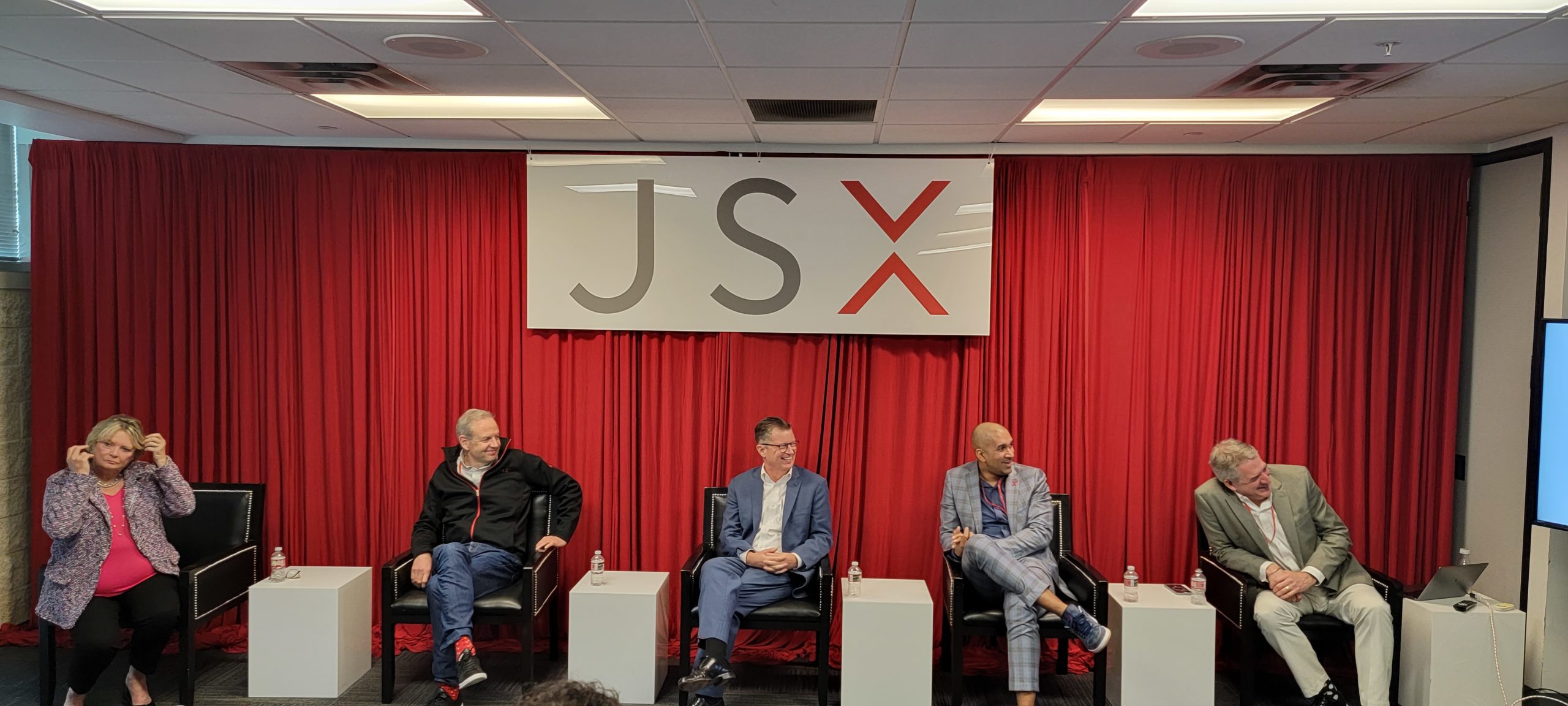
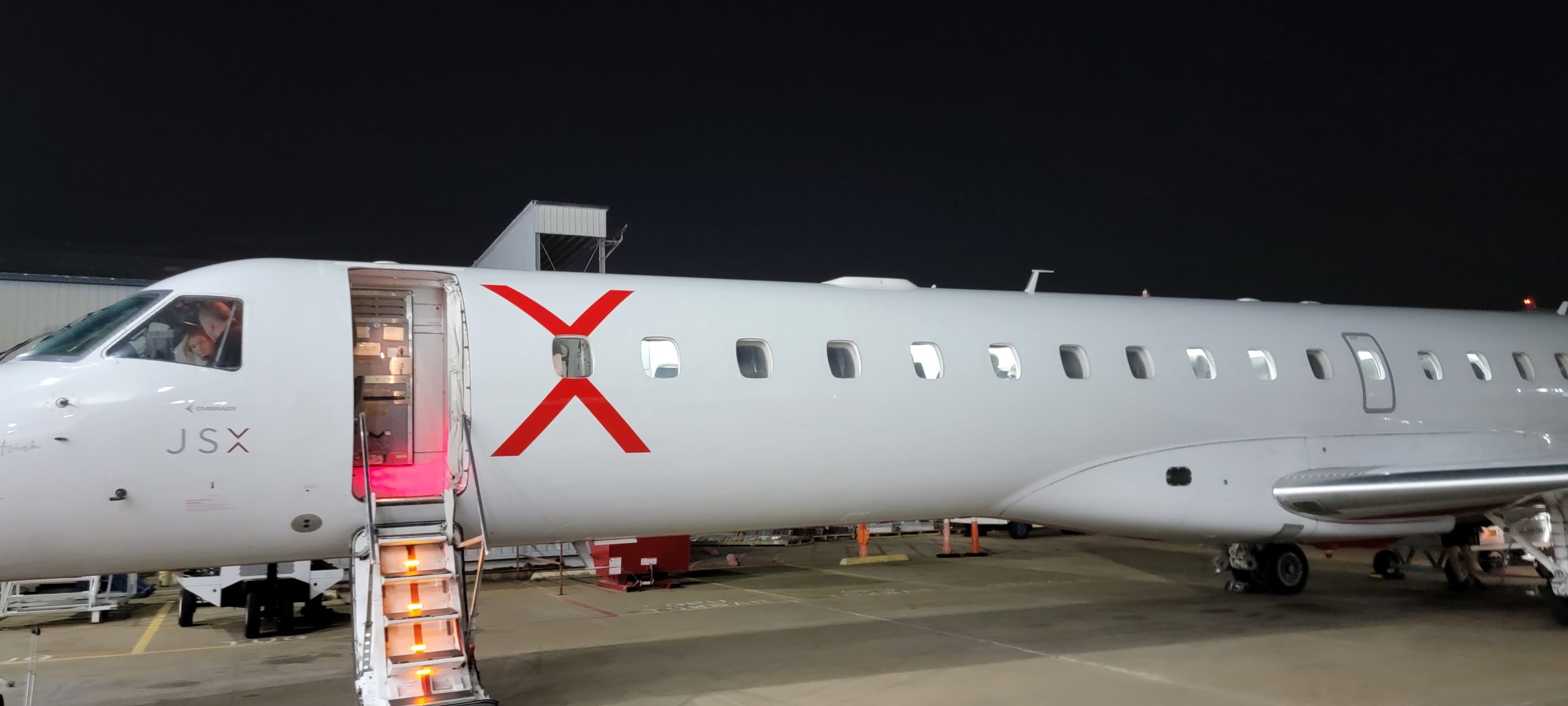
What JSX Does
JSX operates ‘scheduled charter’ flights using regional jets outfitted with just 30 seats, using private terminals. It’s a bit of regulatory arbitrage. By limiting planes that normally carry about 45 passengers to just 30 seats they aren’t only providing a better inflight product, they’re also allowed to operate under Part 135 rules from private terminals without TSA. That means a lot less hassle and much more efficient use of your time.
On board, there’s above-average legroom. Seats are comfortable. Drinks and snacks are free, and so is wifi. Checked bags are included in the fare. They do make money on excess baggage, pet in cabin fees, and seat fees. If you want one of the seats with a separate side table on the right side of their E-145 aircraft, that costs extra – currently $30 ($35 for exit row) regardless of the length of the flight, though expect pricing to tier with demand and distance of the flight in the future.
It’s a premium product, both because they offer flights from private terminals but also because they offer a friendly experience without a lot of extra charges. And it’s less than you’d expect, for instance I’ve paid $149 and $159 for my short Austin – Dallas flights. Longer flights cost more, and so do flights that are selling out – it will often be more to fly JSX than buying a comparable major airline ticket, but it’s also a different product.
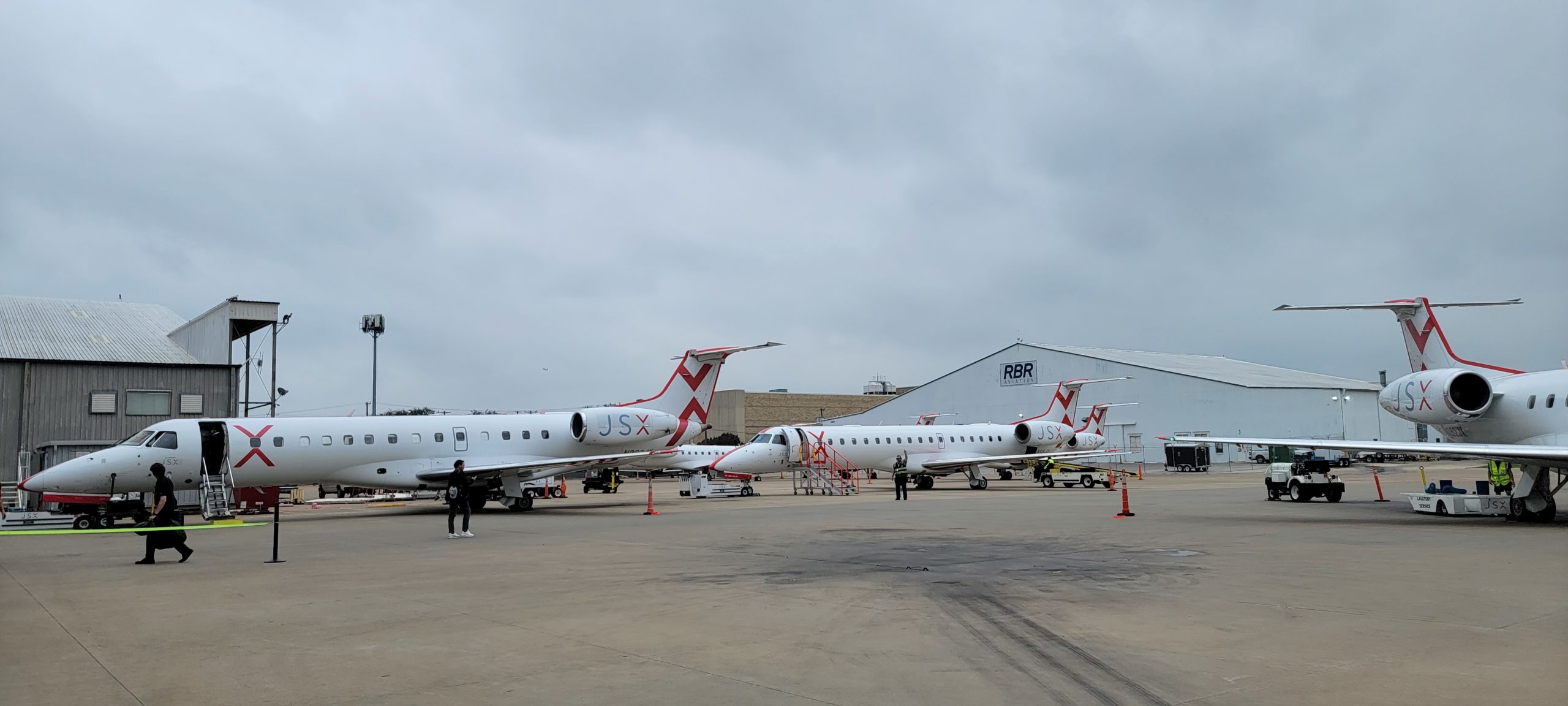
Putting Undervalued Assets To Work
CEO Alex Wilcox, who worked at JetBlue at its launch, and was President and COO of India’s Kingfisher, laid out the carrier’s history, beginning with their first flight in April 2016 from Concord to Burbank.
Wilcox says “people are buying time when they fly JSX” and while JSX is obviously a shortened version of its earlier name JetSuite X (rebranded in 2019), he pitches that it means Joyful Simple eXperience.
They run point-to-point flights using Embraer 135 and 145 aircraft, with no current plans for connecting traffic. That makes the operation much simpler. And short, point-to-point service by commercial airlines is limited. Most smaller markets run flights through hubs, but with just 30 seats to fill they can operate in markets that would be unprofitable for the majors.
His former employer JetBlue invested in 2018, followed by Qatar Airways, and then United. In addition to the three large airlines, there are major investments from two family offices. JSX is privately held, and discloses little about their operation, though I was able to get some operating and financial metrics from their executives.
JSX flies used Embraer E-jets, they’re fulling depreciated, and the cost to them is about 10% that of a new aircraft. They invest a couple million dollars in each, and currently own about twice as many as they’re operating, inducting about 1.5 planes per month to their fleet. Their capital costs are low, their 1000 employees are still new, but their seat costs are high (few passengers, short flights) but their revenue is high, also.
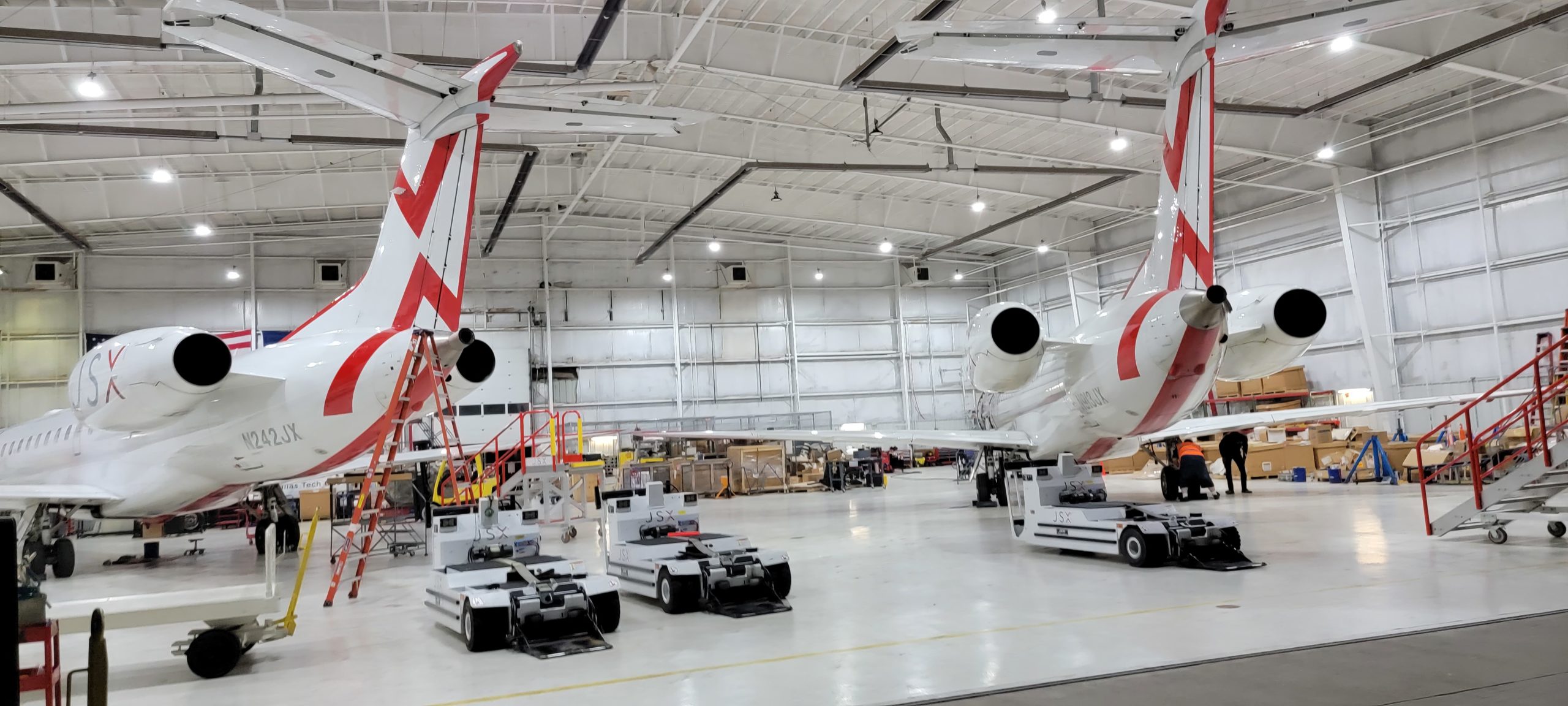
Here you can see their new hanger at Dallas Love Field, once occupied ages ago by Delta, full of Embraer parts acquired out of ExpressJet’s bankruptcy.
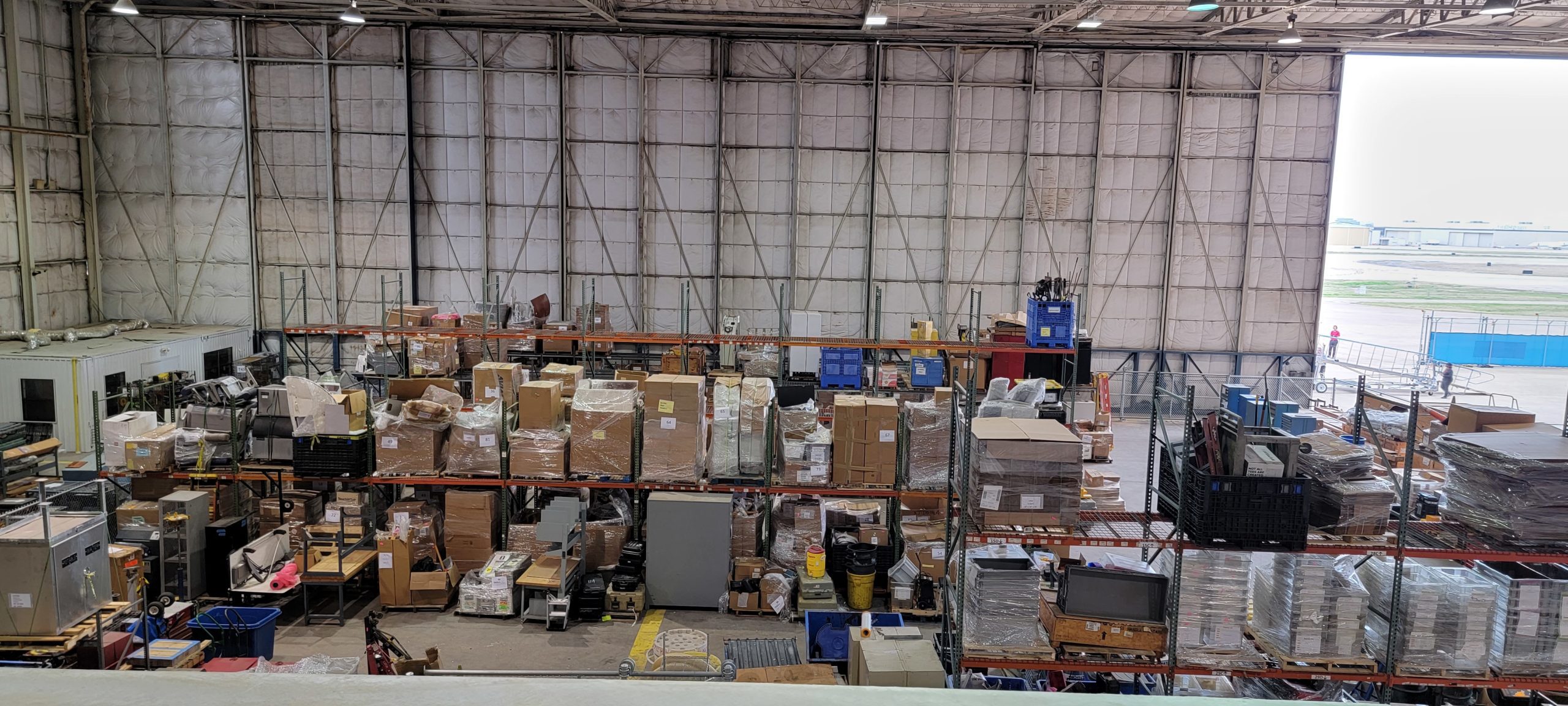
JSX has a lot of senior captains. They offer pilots who are retired from major airlines that still want to fly excellent quality of life, since about 90% will overnight at home, working a morning or evening schedule. They can bring on more junior co-pilots than commercial airlines, while captains remain in control of the aircraft.
Part of their hiring process is a happy hour with alcohol, which comes at the end of all hiring events. They have an “unofficial no jerk policy” and this is especially the case for cockpit and cabin crew. So, they observe people at the end of a long day with a drink in their hand to “get an idea of who’s a jerk.”
What JSX ultimately does is take undervalued planes and people – diamonds in the rough – and use them to reduce the price point from thousands of dollars to hundreds of dollars for passengers to access private airports.
Security Departing From A Private Terminal
When you fly JSX you don’t take off your shoes or take out your liquids, and it’s fine to bring a bottle of water.
You show up at the airport – at least 20 minutes prior to departure – and you walk up to a podium. Even if you’ve checked in via their mobile app, you still have to show an ID. That’s because they run their passenger list against Secure Flight, and there’s no TSA screener doing a document check.
They’ll swab your bags, give you your boarding pass, and then call your flight 15 minutes prior to departure. You’ll walk through a scanner, and they tell you to remove your laptop from your bag and carry it through openly.
The carrier points out that they don’t have “legions of entry level contractors touching” their aircraft, as commercial airlines do. There aren’t any contract cleaners. So that’s actually less of a vulnerability, underdiscussed.
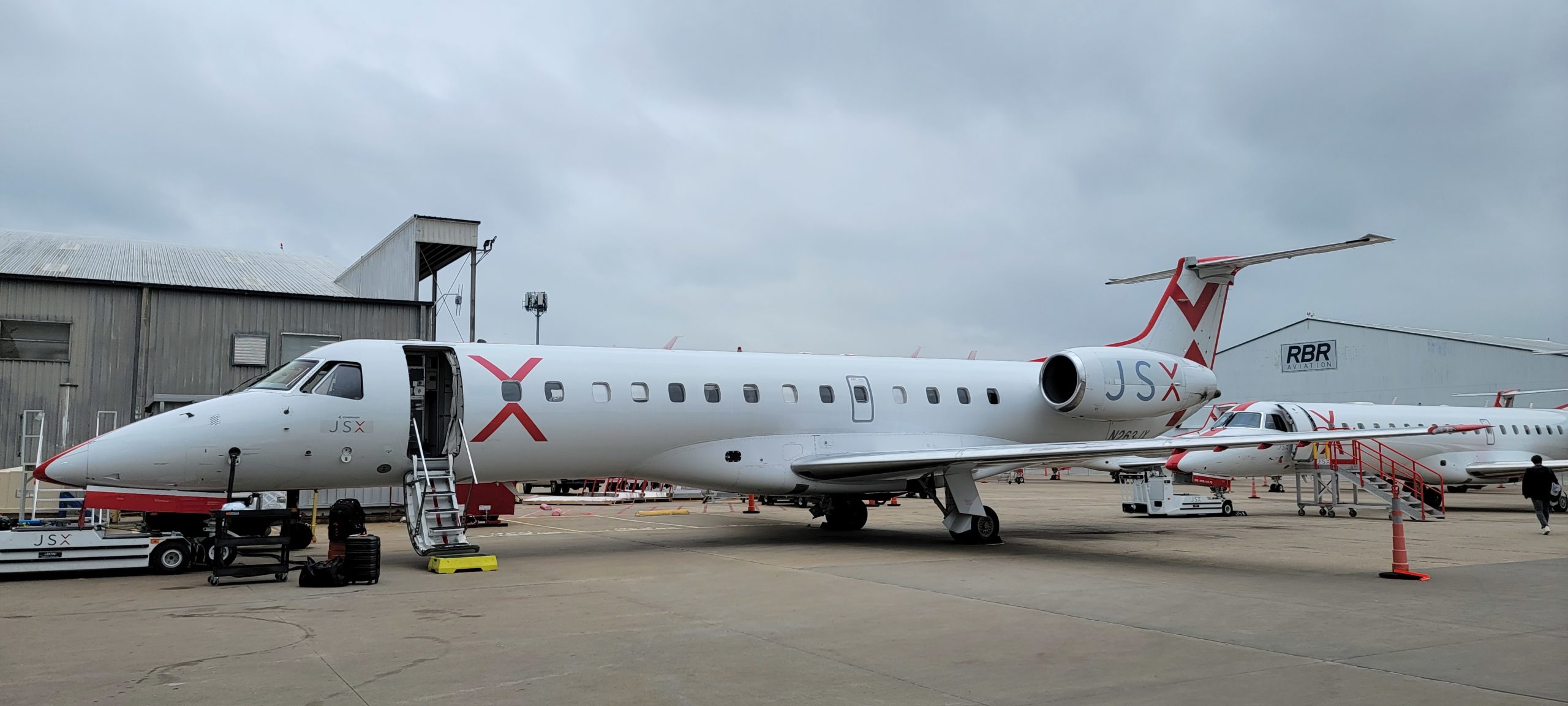
I’d point out that they also have to be less of a target. They aren’t American Airlines or United Airlines. They don’t fly large planes with lots of passengers. There’s not nearly as much value in someone ill-intentioned going after them. Moreover, given the track record of TSA, the shoe carnival in the terminal doesn’t give me confidence to begin with, and lack of TSA as such is hardly a vulnerability.
Industry-Leading Inflight Wifi
JSX wasn’t always committed to SpaceX Starlink. They “wanted to be first with something that was new” according to the CEO, and they started looking at SmartSky, however SpaceX came to market first. Their agreement to equip up to 100 planes isn’t exclusive, they could add a provider, but given SpaceX performance that seems unlikely.
The service is available on the ground, from boarding to deplaning. Starlink wifi bounces off of lower orbit satellites than others, offering not just high speed but low latency. In my experience I was able to get up to 100 Mbps download and over 10 Mbps upload, but most importantly there wasn’t a wait. I transitioned from activity to activity seamlessly across three flights where I tried the service.
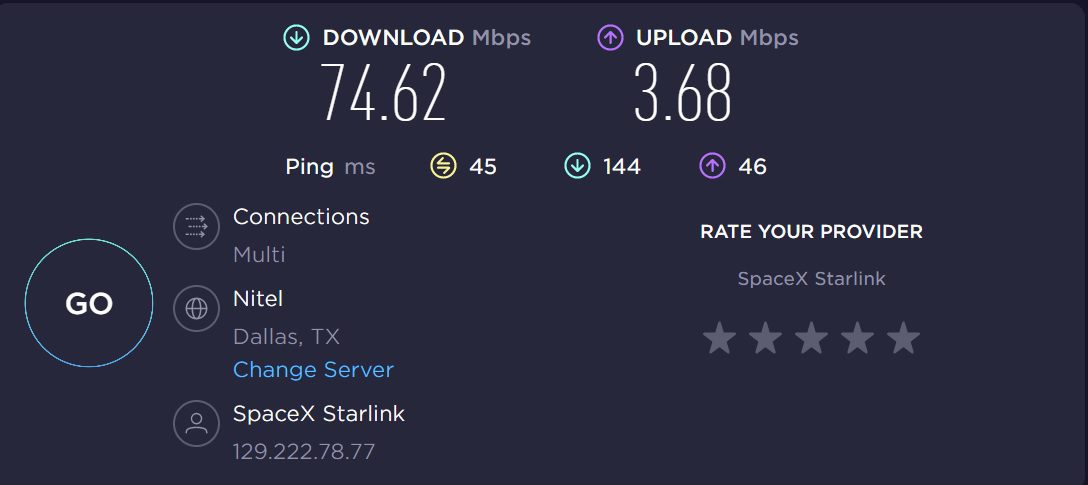
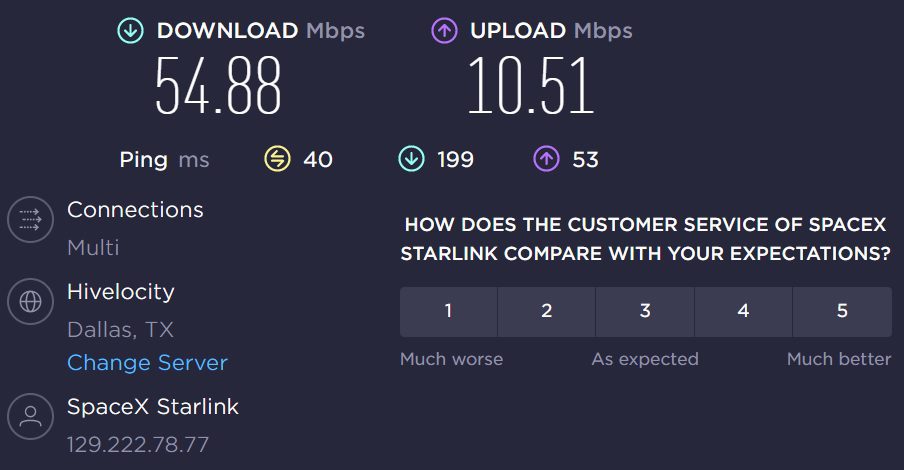
Wifi is free but unlike Delta, which requires SkyMiles membership and a login, there’s no login process. Connect to the network and the internet works.
It’s been impressive to watch JSX install internet in its fleet in a matter of months. Apparently at the outset an install took a couple of days, then an overnight and now about 8 hours per plane.
Speed is helped, of course, by having at most 30 passengers drawing from an aircraft’s available bandwidth. This is a first because no commercial airline has approved to stream internet calls. The space between passengers, ambient noise of an Embraer regional jet, and passenger behavior to date (‘people talk softer on calls than they do to each other’) means that thus far they haven’t had complaints about passengers bothering their neighbors. As they roll out announcements about inflight calling, they plan to have etiquette announcements as well.
The JSX Inflight Product
JSX operates short flights. The range of an Embraer ERJ-145 is limited. They aren’t going to be operating routes over 3 hours, and the planes don’t have ovens.
Their ERJ-135 planes, mostly flying within California, are configured one-by-two, so three seats per row. I’d say it’s worth paying for a seat assignment to have the solo seat if you’re not traveling with someone else.
Their larger fleet of ERJ-145s is configured with one seat on each side of the aircraft.
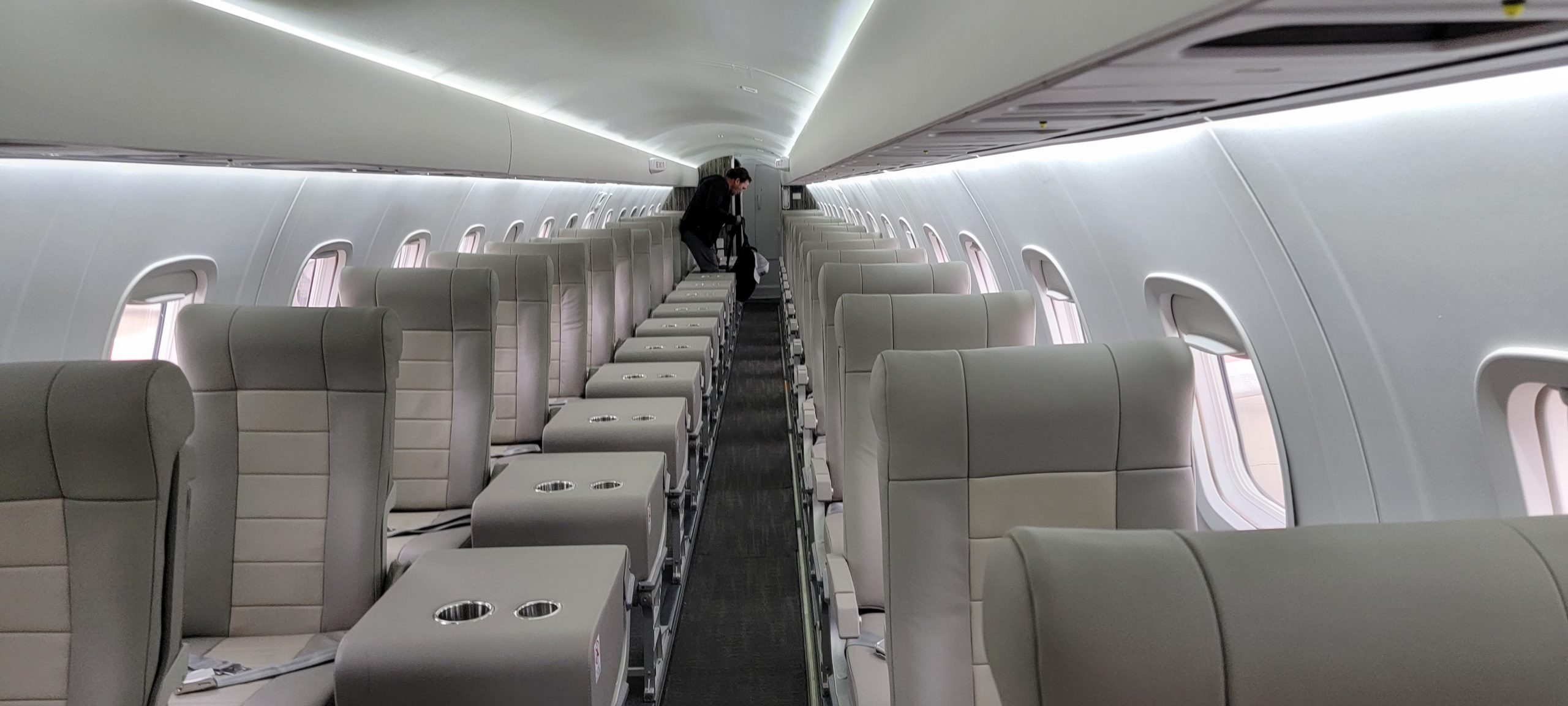
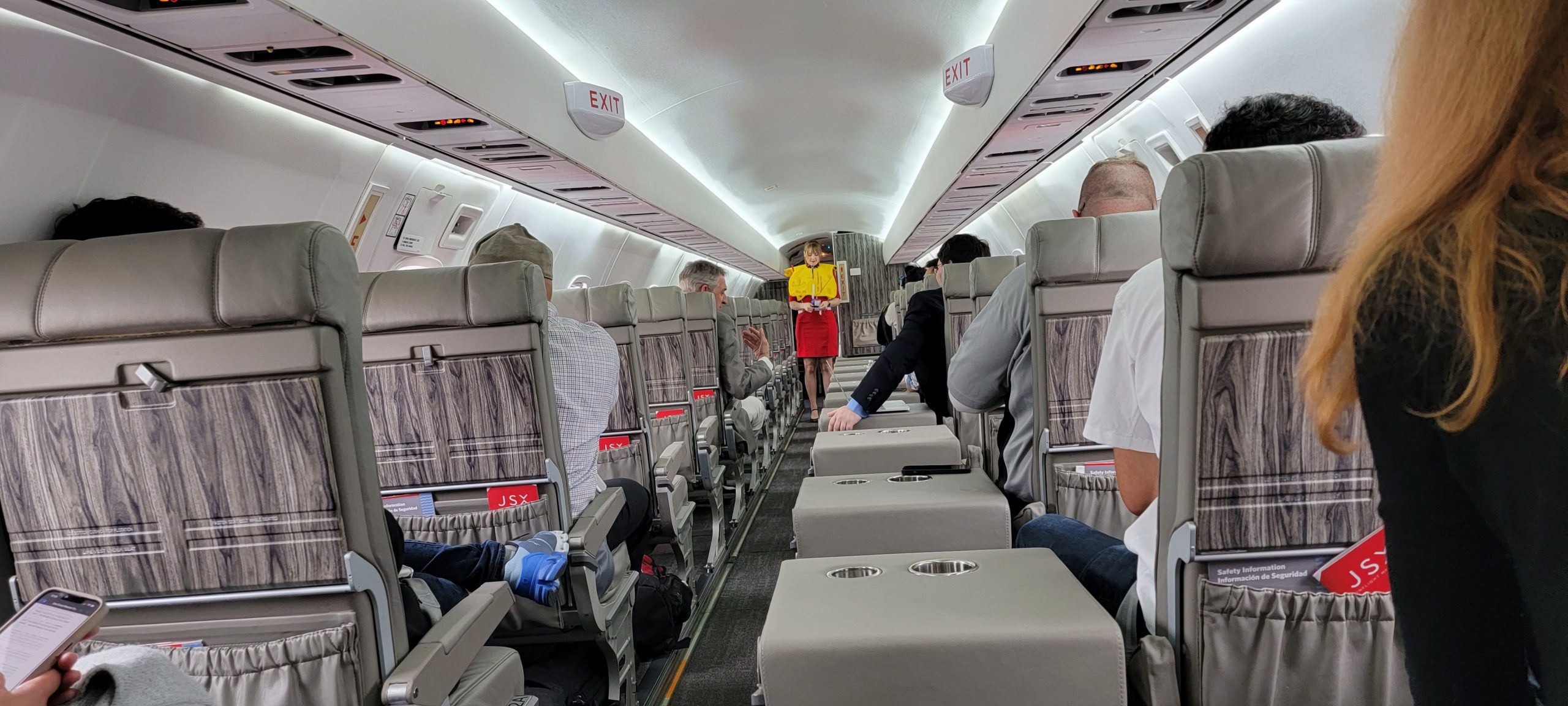
There are no bad seats, but the seats on the right-hand side of the plane have an extra side table. Those are currently priced at $30 more than the cheapest ticket.
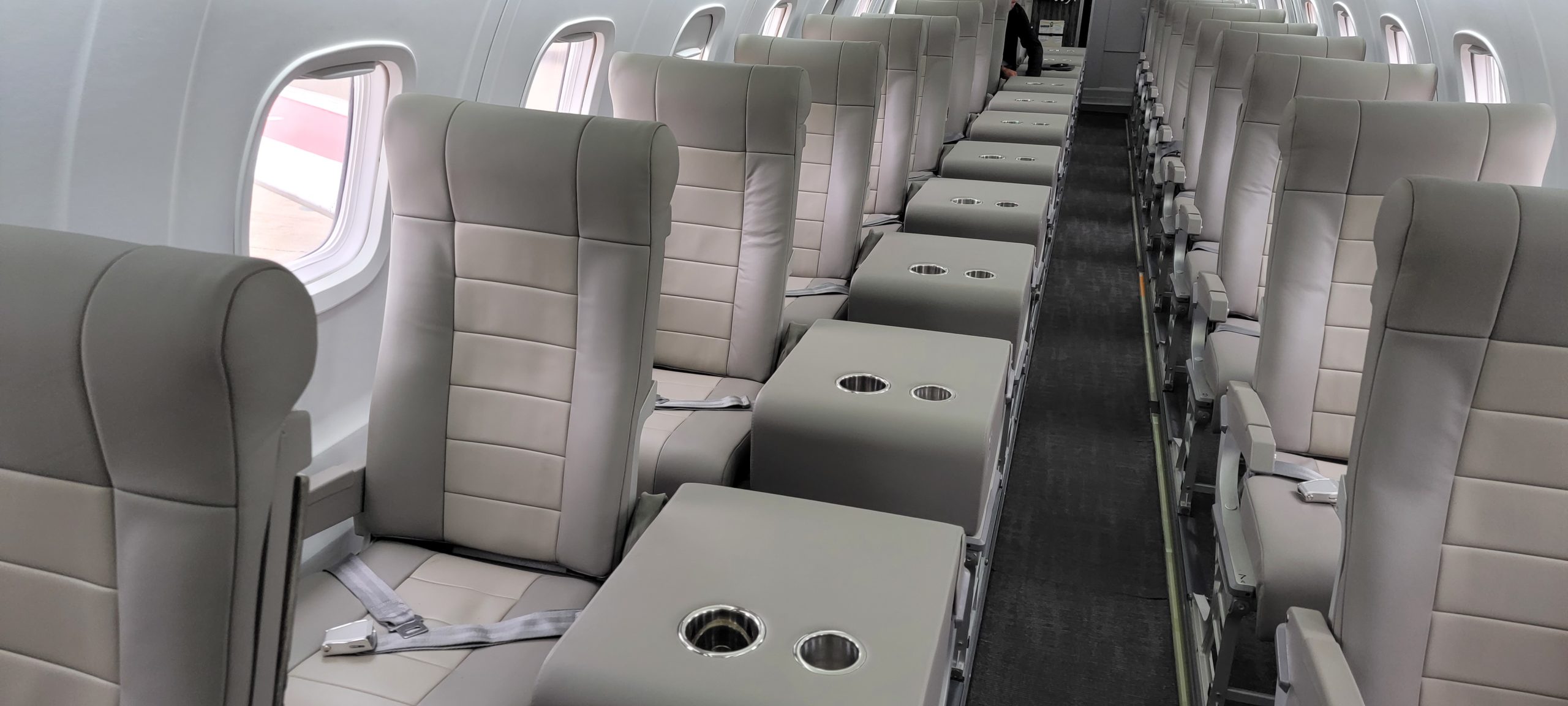
Personally, I’d avoid the left side exit row seat due to the short arm rest.
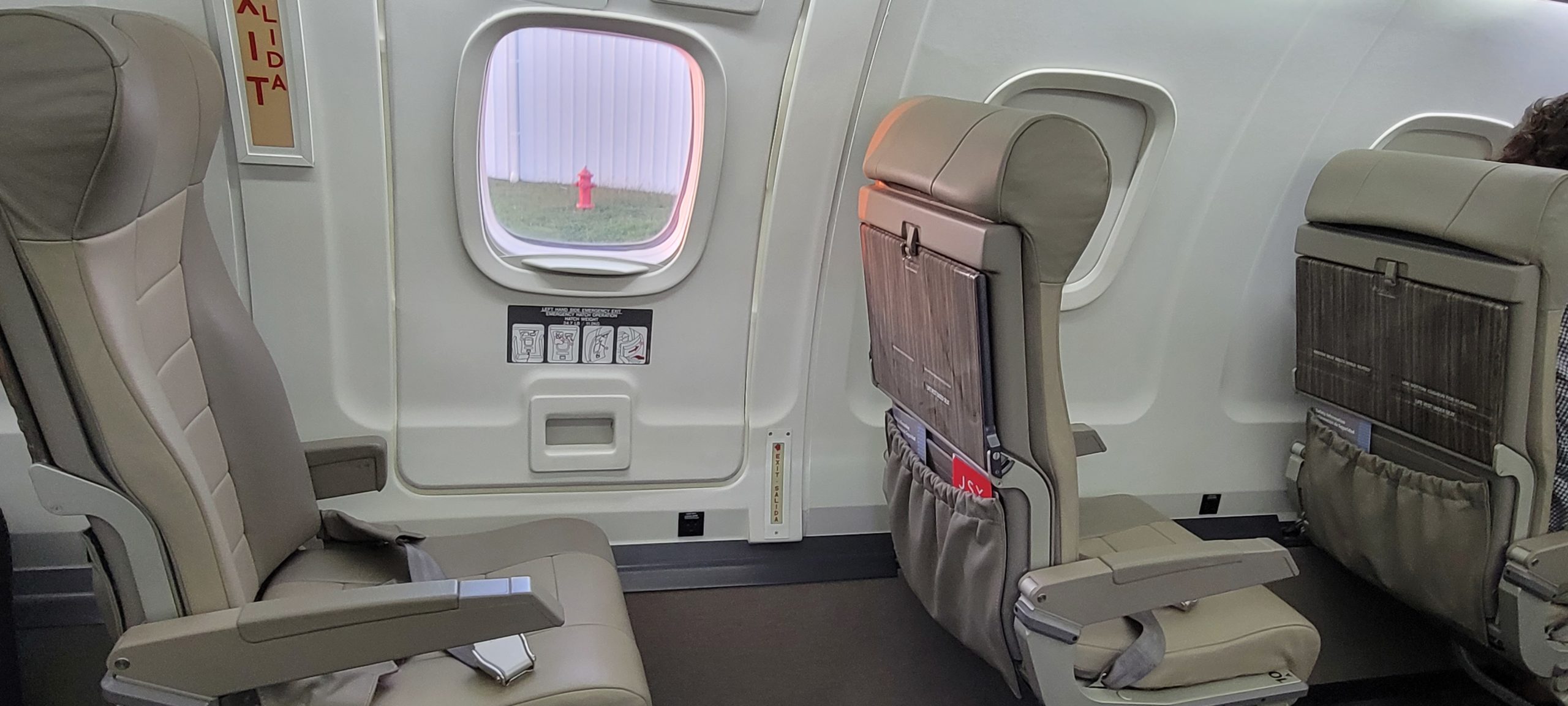
You drop your carry on bags plane side, and your flight arrives you wait on board for a couple of minutes while those without bags deplane. I’ve taken them on simple overnight trips, where I’ve had just my laptop bag. That goes under the seat in front of me, since there’s no overhead bins (which didn’t fit standard carry on bags anyway).
Cocktails, beer and wine are complimentary and so are soft drinks.
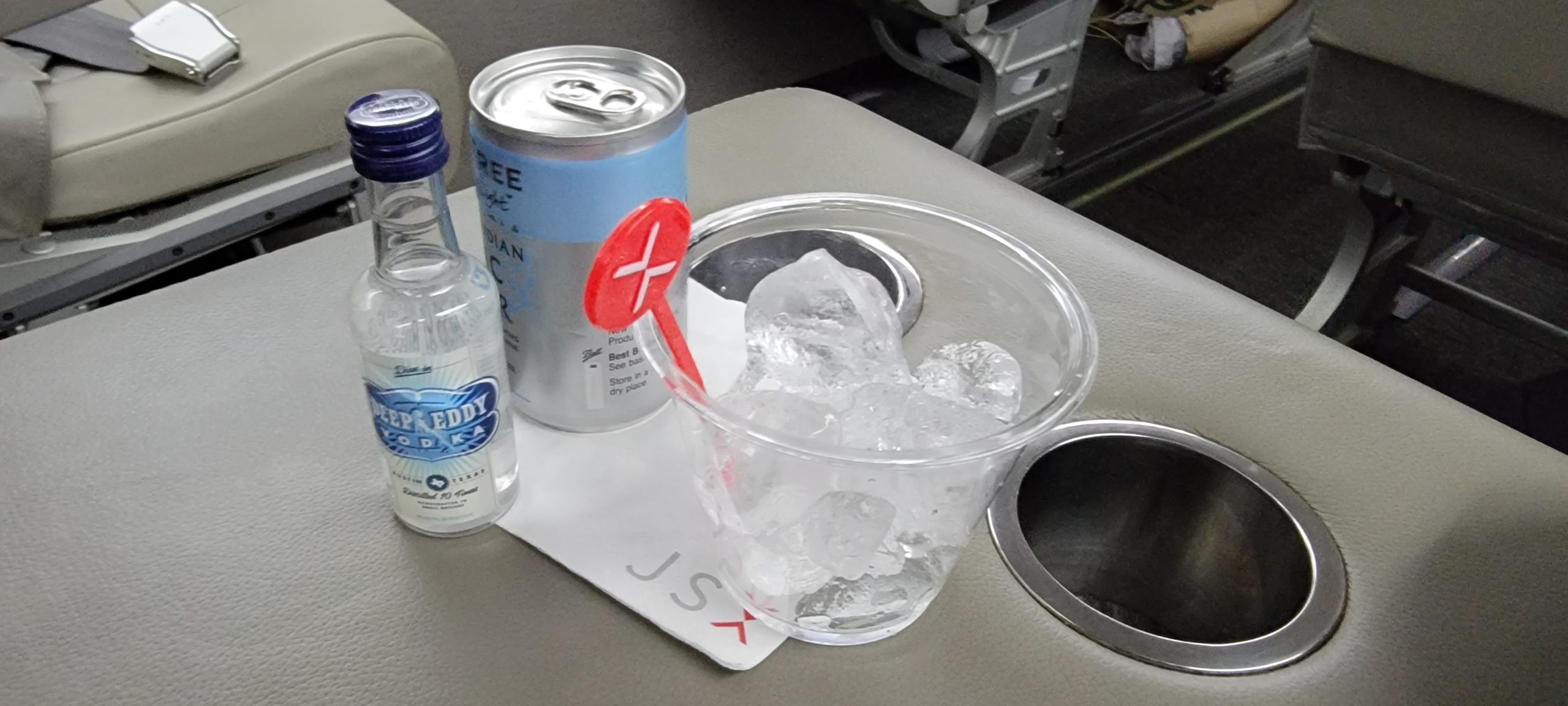
There’s a snack basket on shorter flights, and now they offer fresh packaged meals as well as blankets on request for longer flights. Prior to arrival there’s a mint service.
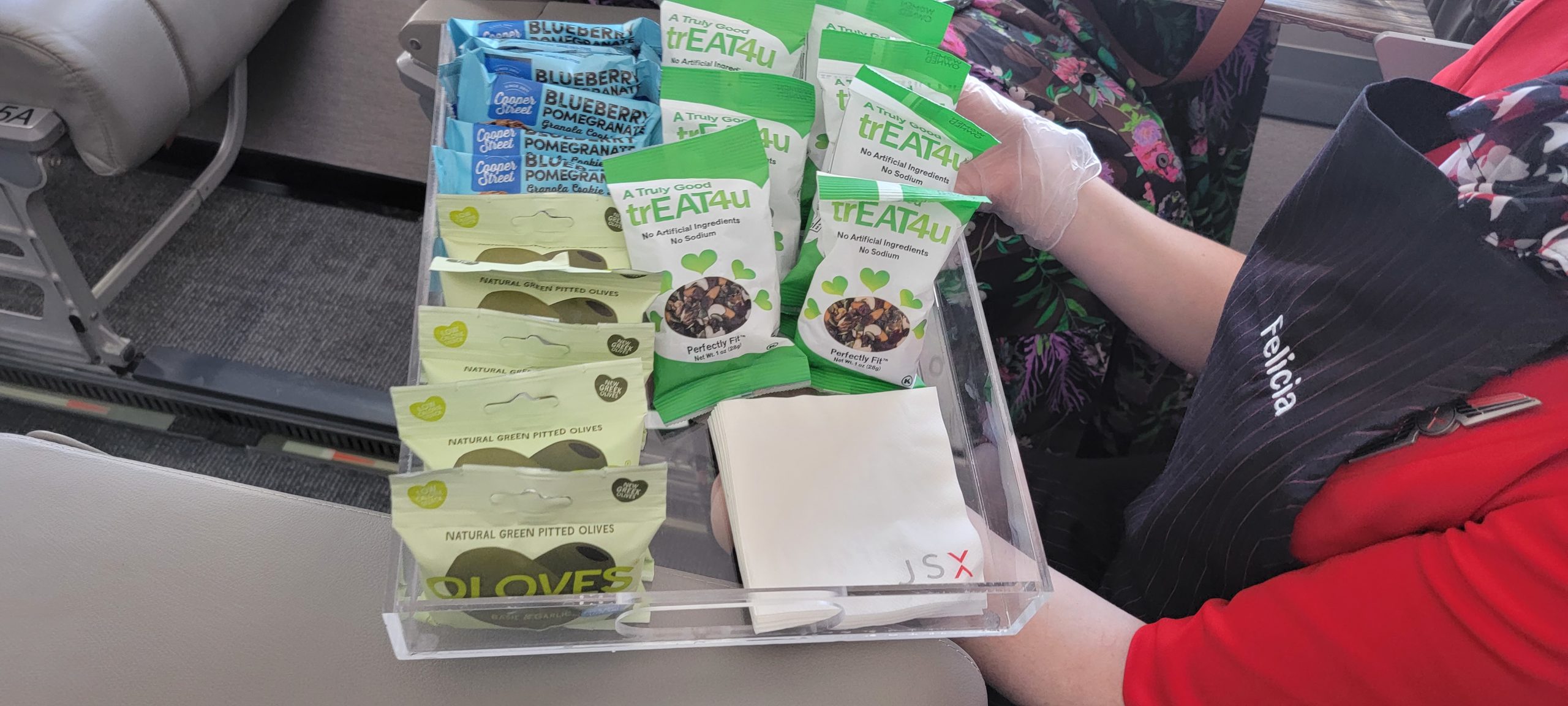
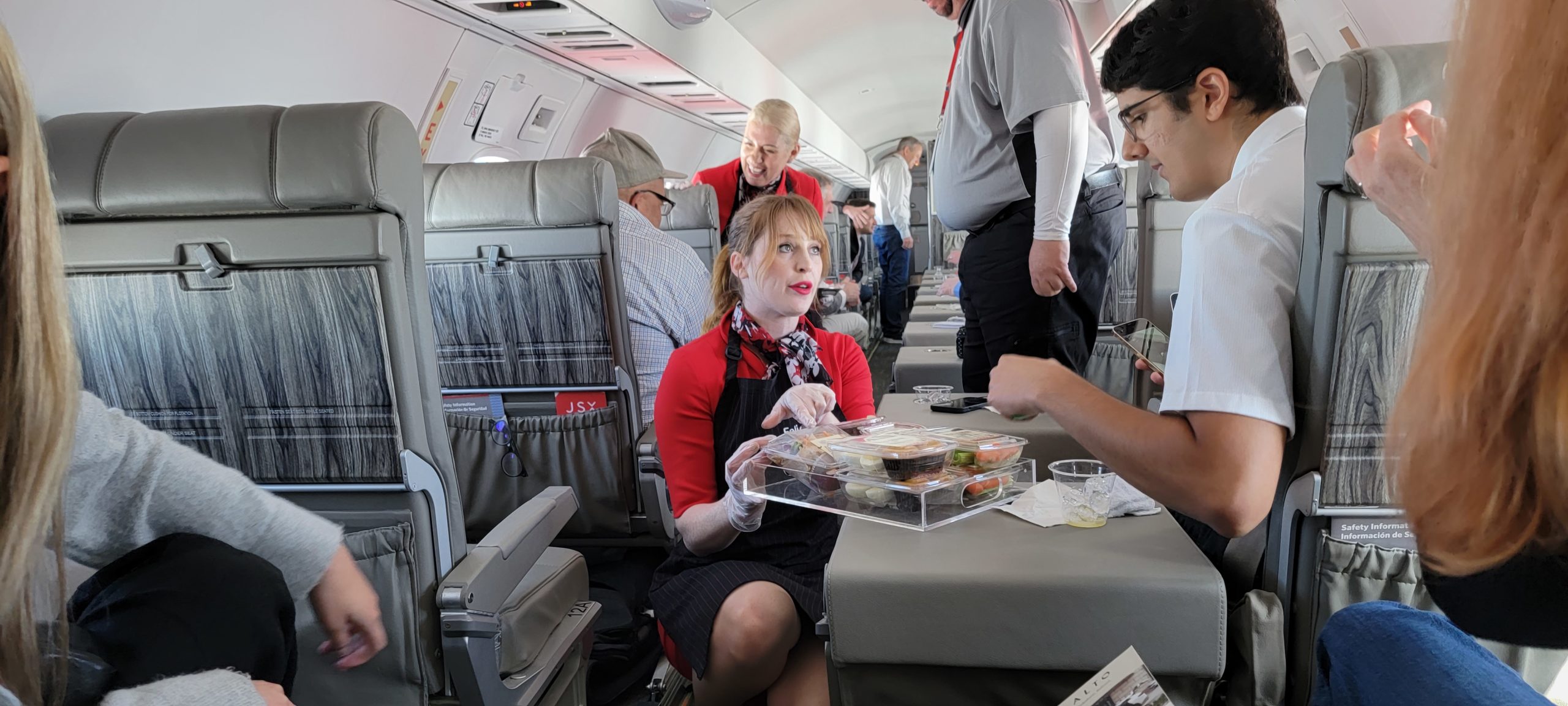
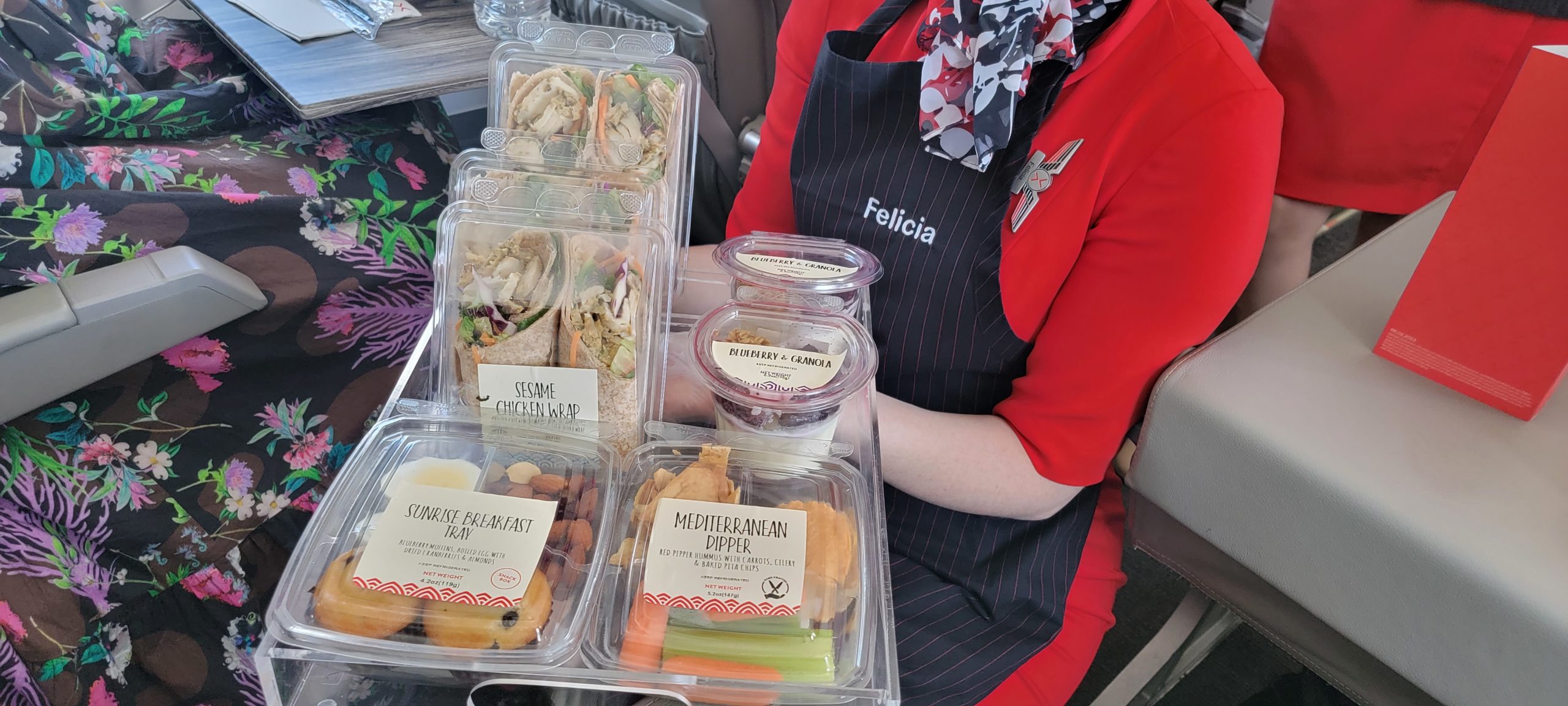
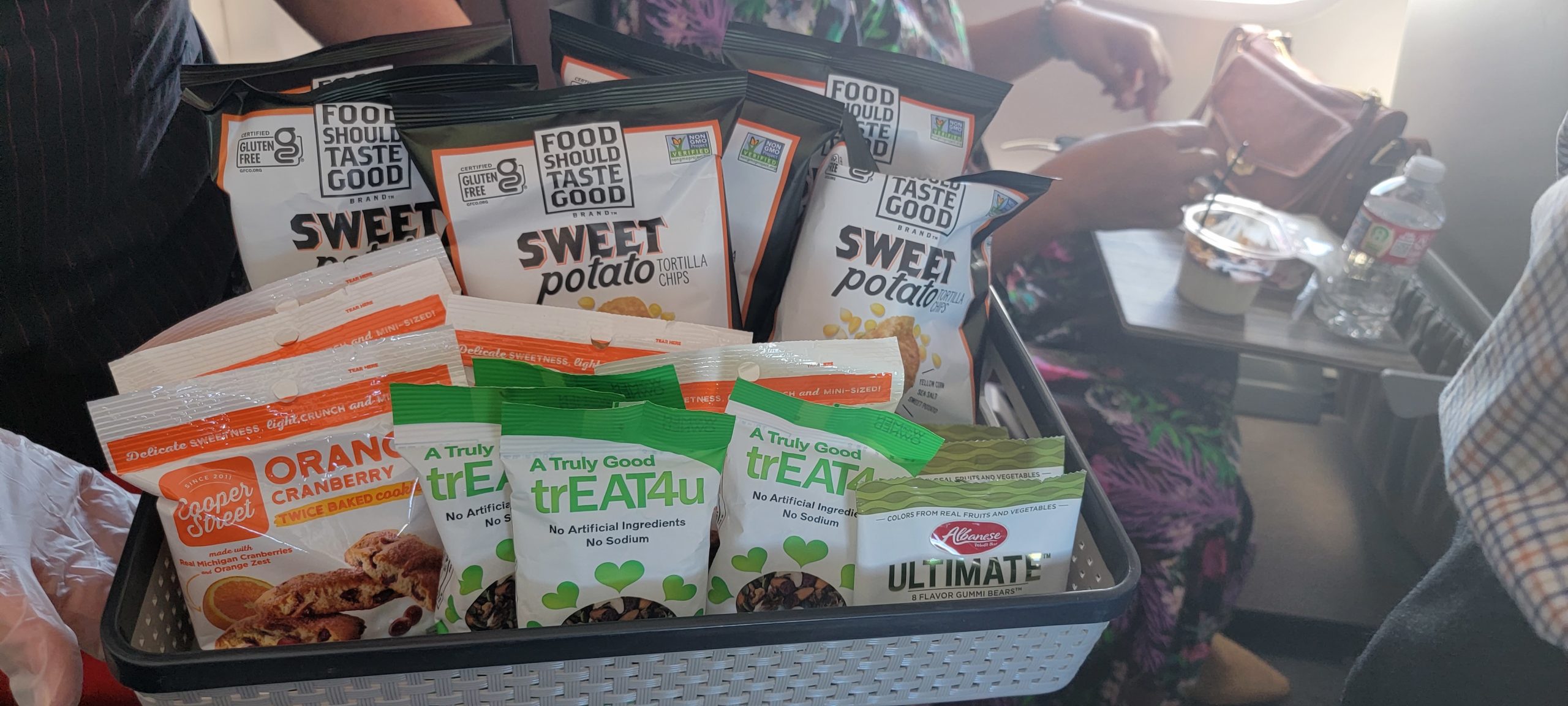
When you get off the plane, you walk out through the private terminal, and either pick up your car (usually valet parking only due to availability) or rideshare. They have rental car stands in some terminals as well.
Why I’d Choose JSX Over Any Commercial Airline With Similar Schedule
When I look at JSX, I feel seen. I hate waiting in line. I hate wasting time. If I can get back an hour of my life at the front end of a trip, not having to leave for the airport as early that’s huge. And it’s much faster out of the airport, too. I’m able and willing to pay a little more for something that’s a lot better.
I organize my whole life around efficient use of time. I’m the only person writing this site, some that cover similar topics have 100 employees. This isn’t my own job, either. Regular readers know that I also have a separate full-time job. And I’m a dad. I have Global Entry and CLEAR. I have access to all the major airline lounges when flying a given U.S. carrier, plus access to American Express and Capital One lounges. I want to work efficiently, and reduce frictions. I hate time spent queueing.
My only complaint the first time I flew JSX was lack of internet. Sure, big airlines don’t put internet on similar aircraft for short flights, but this product is about maximizing use of time. Now sitting in a JSX seat is like sitting at home at my desk but better. I plug in and work. Someone brings me a cocktail and a snack. And then we’re landing.
Unfortunately, my options to fly JSX are limited from Austin. Their biggest challenge is airport real estate, and they’re currently using what amounts to a shack beside Signature Flight Support. They run two daily flights to Love Field, and they have a couple of seasonal flights.
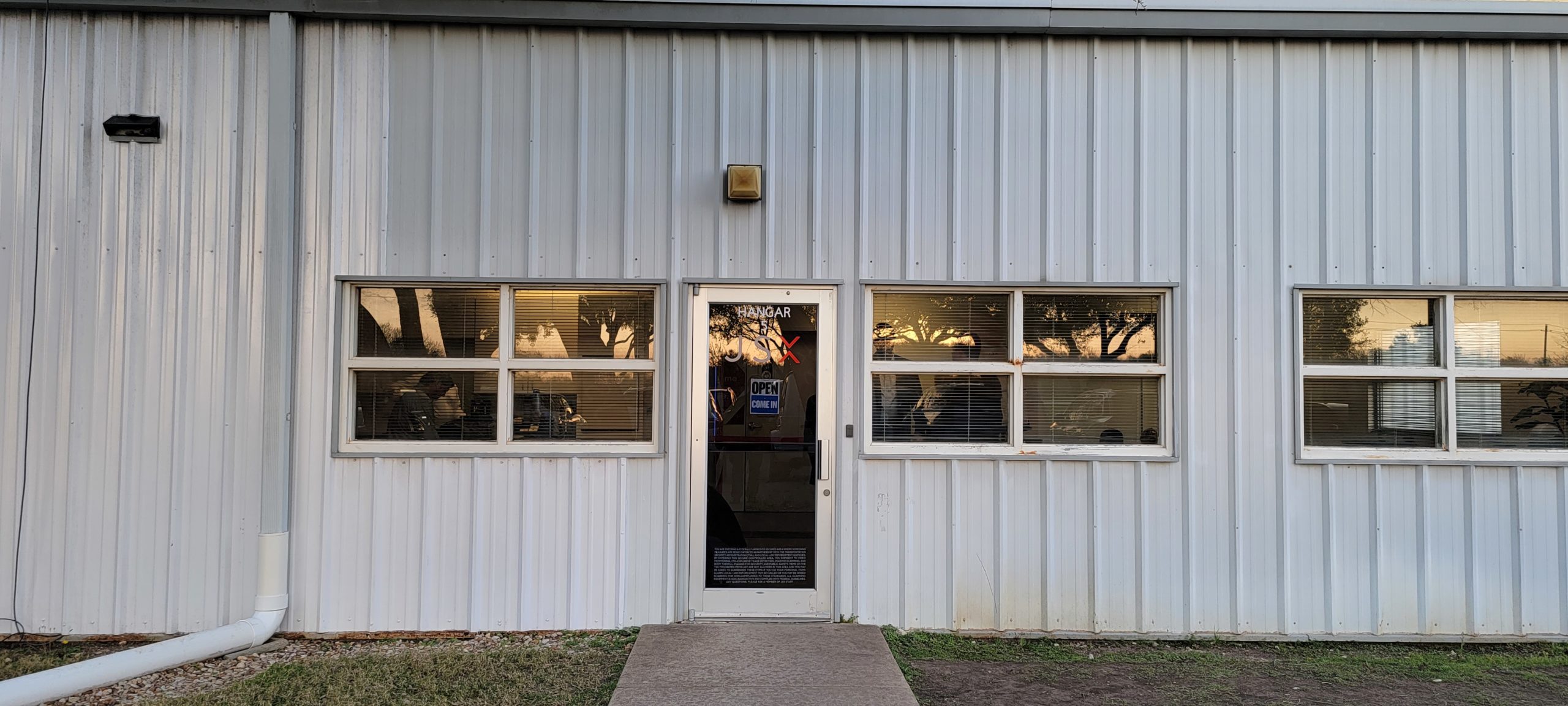
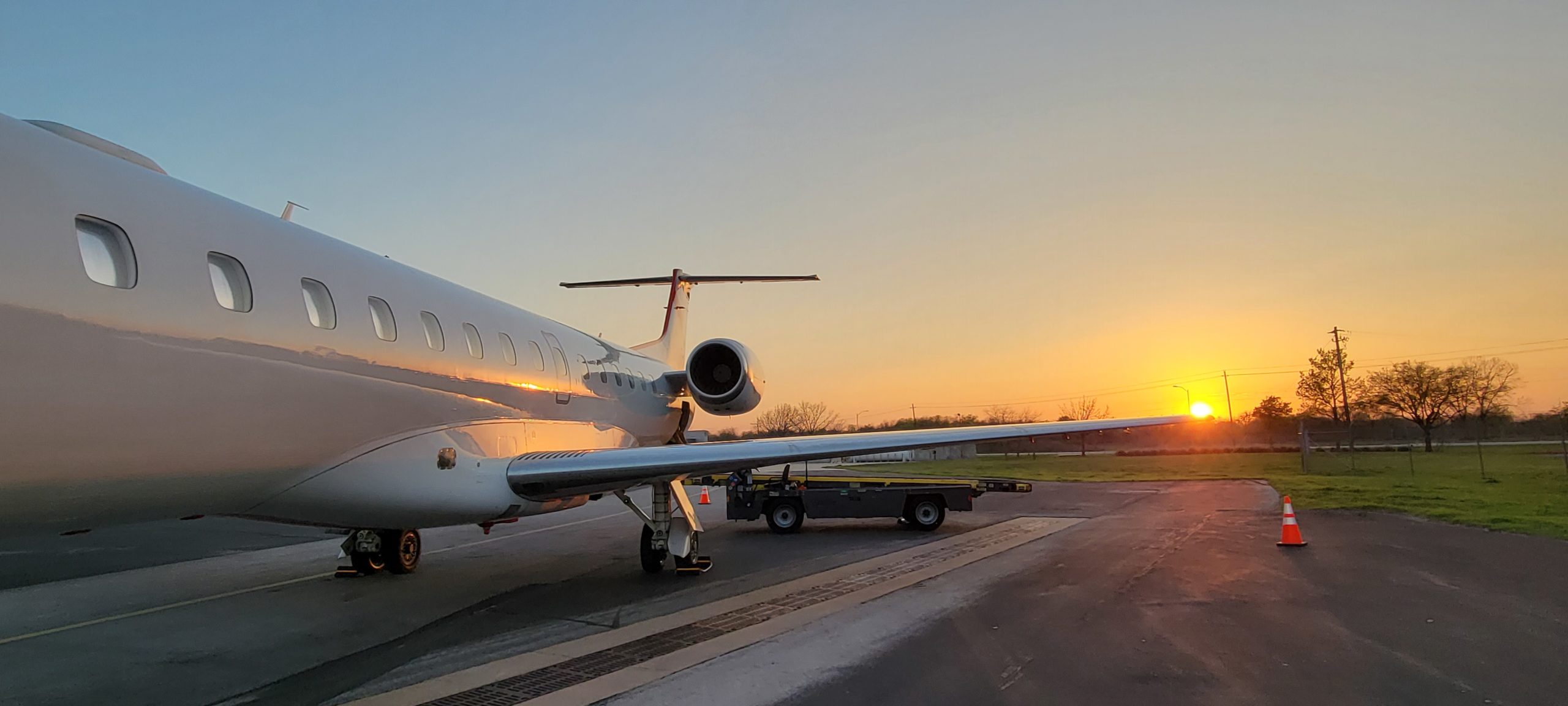
In contrast, American Airlines operates 14 peak daily departures from Austin to Dallas – Fort Worth and Southwest flies 11 peak daily departures from Austin to Dallas Love Field.
If I need to be near downtown Dallas, though, JSX has a morning flight and an early evening flight so their frequencies are well-timed. Until they are able to grow in my home market, I’ll look enviously on residents of Dallas and other key cities (and indeed, those for whom Westchester is super convenient in New York who can fly to South Florida).
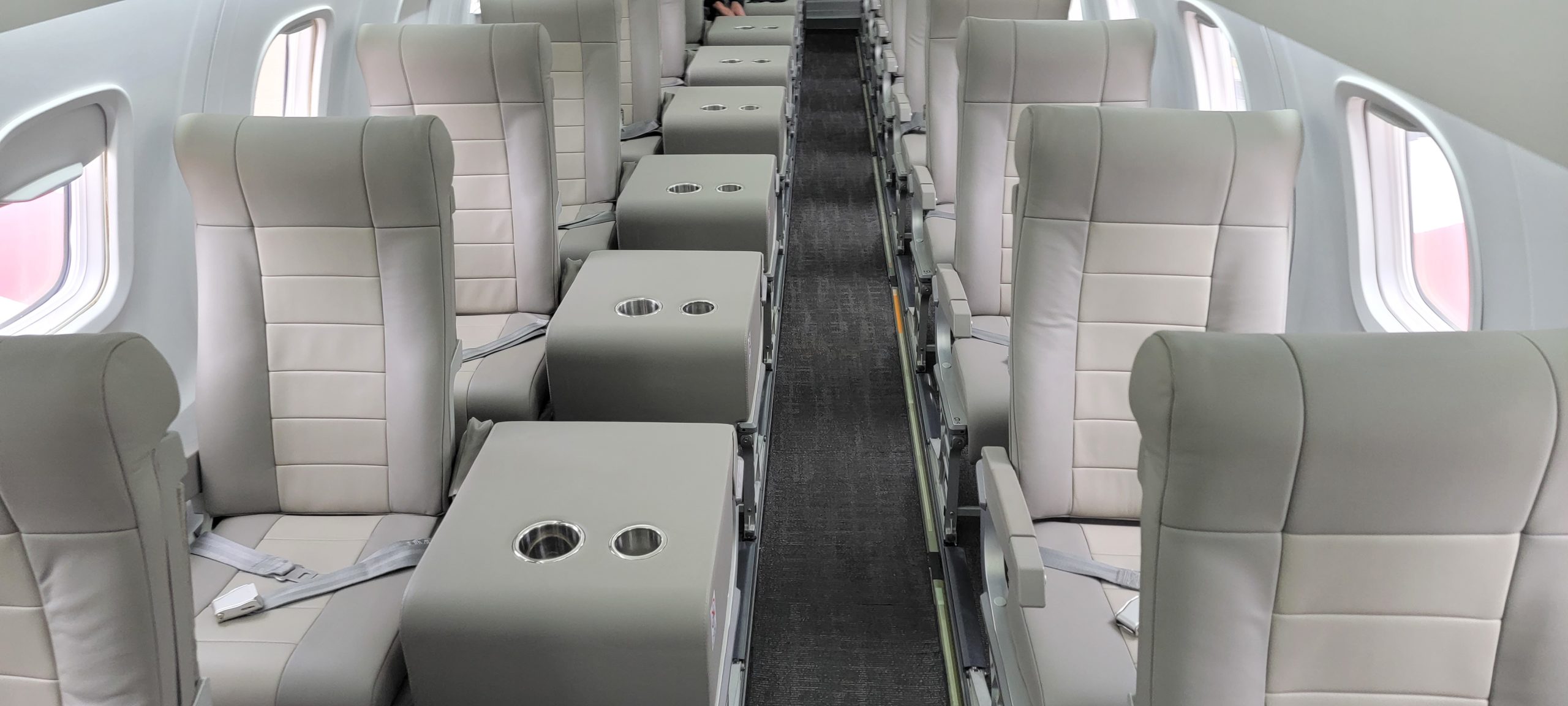
On the other hand, while I would fly JSX over relevant alternatives, my wife probably wouldn’t because she doesn’t like flying smaller jets. They’ve done a good job making the cabin feel spacious, by removing overhead bins (which didn’t hold much anyway). She is more comfortable in more spacious, quieter jets.
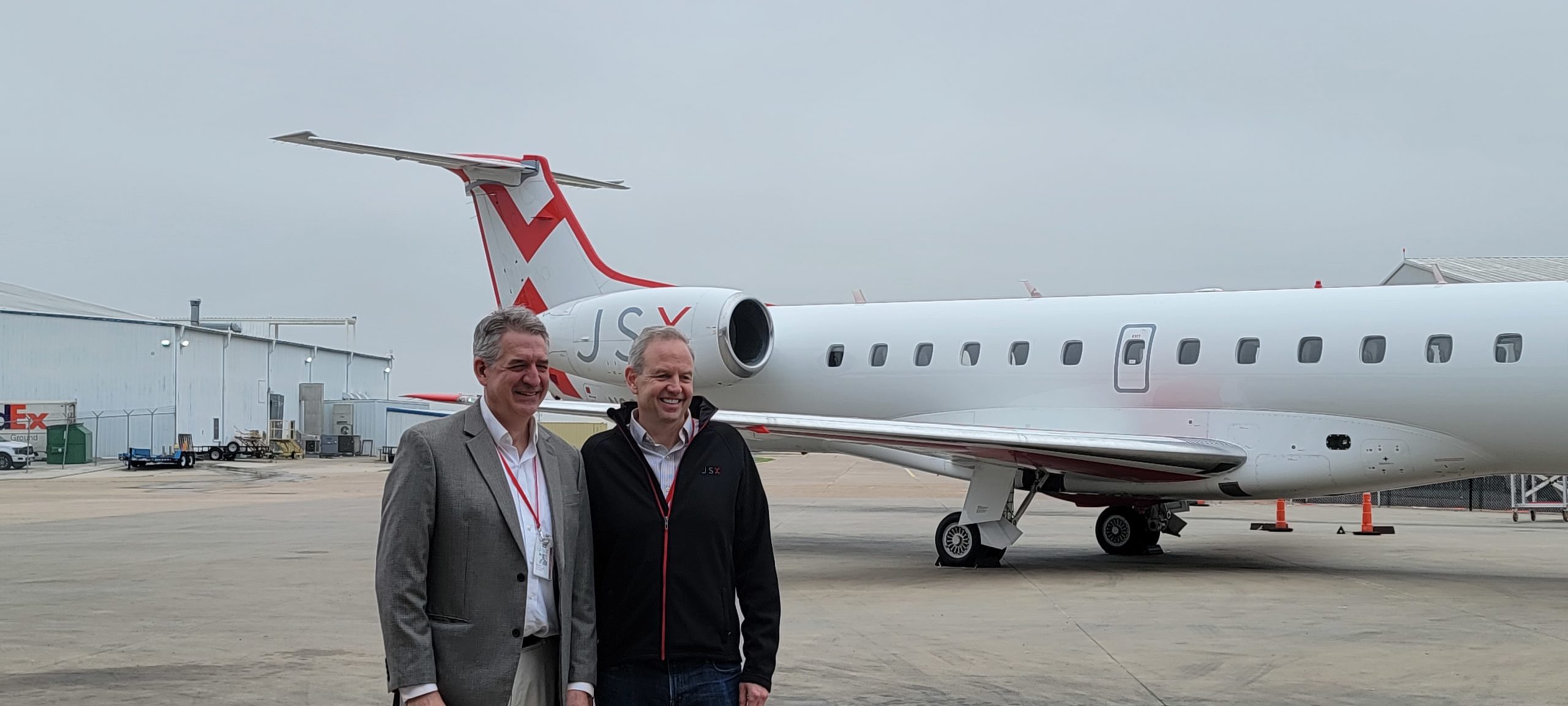
JSX Expansion Plans
JSX started in California, and moved their headquarters to Texas. In the telling of their CEO, ‘you go to an airport in California, their first question is what’s your lawyer’s name so we can sue you.’ (There are competitive issues with their service that airlines don’t like, plus environmental and noise objections to any new flights at many airports there.) In contrast Texas airports have been welcoming.
There will be some growth in Texas, and they continue to fly within California, but most of their expansion will be in the East because that’s where most people are and most who would fall within their target market.
For JSX anything over 550 miles is considered long haul. The ERJ-145 maxes out at around 3 hours of flying. And in fact for Dallas – Orange County I’m told that some frequency less than 5% of the time they have to refuel, since that range is at the top end of the aircraft. As a result most of their flights will be shorter.
I assumed that shorter flights benefit most from their private terminal business model anyway, saving 60-90 minutes on a trip is a bigger deal for a 1-2 hour flight than a three-hour flight. But they say the model holds, as long as they can generate fares that justify the higher cost of longer service (crew, use of plane, fuel etc.).
In determining new routes they target the top 10% of fare paying customers for a given route ((data from Cirium Diio), general aviation traffic between the city pairs (although they don’t have data on what is traveling), and census data for concentrations of high net worth potential customers.
Here are some routes they see as possibilities for expansion:
While there are many more private airports they could fly from than there are commercial airports, they find that introducing customers to travel from an airport they’re familiar with (albeit a private terminal) is easier, and it also doesn’t look the customer in. It’s less of a decision to fly one way on JSX and potentially one way with someone else, with their car at the airport, than to have to fly roundtrip on JSX (and also with JSX’s more limited schedule).
Who Is The JSX Customer?
This is a premium product, and while it strikes me as not being expensive ‘for what it is’ and their pricing often may not be much above commercial airlines (I’ve paid no more than $70 more to fly Dallas – Austin), it usually does come at a premium to a commercial airline trip and sometimes double or more..
So far they’ve had mostly premium leisure customers, in part because distribution has been direct through their channels (or via United and JetBlue). They believe that’s a less price sensitive customer in the event of an economic turndown, but that remains to be seen.
They’re making inroads into managed corporate travel slowly. I’ve certainly seen business travelers on board, and those will tend to be less price sensitive and more time-sensitive. The challenge for JSX is distribution, since they don’t come up in corporate booking tools or searching online travel agency sites. Many customers simply don’t know they’re an option.
Overall the customers they have love the product – they report a Net Promoter Score of 82 (vs ~ 50 for Delta). While their ground experience is their key selling point (though they’ve improved in-air), ground experience has lower satisfaction scores because that’s where customers express frustration over delays.
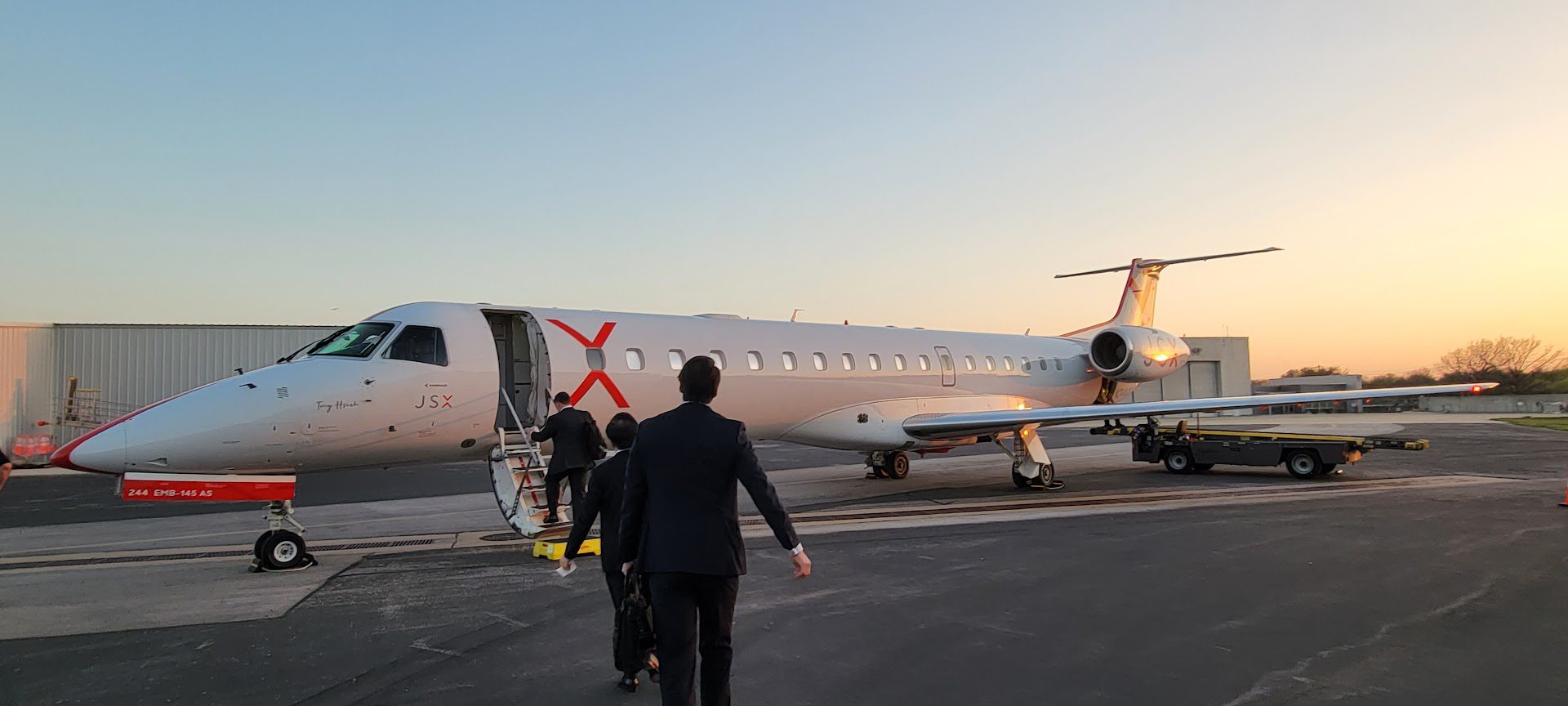
JSX’s Loyalty Marketing
JSX doesn’t have a frequent flyer program, and I didn’t sense a lot of urgency in creating one although I think that’s a missed opportunity. I did hear that they intend to have one and eventually will have one and that it will “not necessarily [be a] traditional program.”
Currently customers can earn points in JetBlue TrueBlue or United MileagePlus, but you aren’t earning a lot of points. My $159 one-ways have earned 95 United miles apiece, though on the upside they’ve posted immediately.
The vast majority of bookings are made directly with JSX, so they already get customer information for marketing. Many customers are motivated by rewards, flying on company dime and picking up a free trip for their family. And others are motived by recognition. Without many add-ons there are limited things JSX could do for elites, but they could consider priority customer service (for phone or chat); complimentary seat selection on all fares; or complimentary parking.
If they had their own currency, they could offer redemption flights out of excess inventory. And they could partner with a transferable bank program – not just to monetize unsold seats, but fundamentally to introduce their product to new customers. Once you’ve flown them a couple of times you’re going to want to come back. They’ll be top of mind, even when they don’t come up in flight search.
One possibility that was mentioned was a subscription model, an upfront fee to join a club that comes with discounts and things like premium seat selection. That really only works in well-established markets with a lot of flights, or for the person for whom a single route gets flown frequently and where they’re coming out of pocket personally.
I’d personally look to the traditional pillars of recognition and reward, doing both of those things in a way that fits well with their product, in order to motivate incremental business and introduce their product to new audiences. They’re already incurring a marketing cost with JetBlue and United, it seems natural to have an in-house option as well.
JSX Operational And Financial Results
As a part 135 carrier that’s privately held we don’t have anything near the level of information about JSX that we get on a month-by-month and quarterly basis from publicly traded commercial airlines. And their executives were naturally a bit cagey about what was shared with a media audience.
Still, they were willing to tell me that they are not profitable today but that they expect to be profitable on an EBITDA basis this year, and on a GAAP basis in 2024 (although “some markets” are GAAP profitable today).
Total revenue is in the “hundreds of millions of dollars.” They’ll be close to $500 million in revenue this year, and over that amount next. Their revenue will be a function of how many aircraft they bring online and which routes they deploy them to – they find that new flights in existing markets pay immediately, while new markets take 18 months. Within 5 years they expect to be generating over $1 billion in revenue (though probably sooner than that).
Most markets generate about $1 per seat mile. Given their small number of seats and short stage lengths, costs and revenue per mile look very high.
Perhaps this was an exaggeration but their CEO mentioned ~ 10% of revenue comes from pet fees. Pets under the seat are free, while dogs up to 70 pounds can sit in a seat with a ticket. Seat fees have to be at least half of that, though the move to 1×1 seating on board their Embraer E-145s actually reduced seat revenue, because people don’t feel the need to buy a seat when they don’t have anyone next to them regardless of what’s assigned.
JSX has almost no debt, just “a couple million bucks on the first 5 planes” they acquired, and since JetBlue invested, they’ve always had “at least a year’s worth of cash in the bank.”
They ran 21,000 flights in 2021; 30,000 in 2022, and will operate 50,000 in 2023. They have a 99.3% flight completion rate, and run “in the 80s” for A-14 arriving within 14 minutes of scheduled time, having never hit their goal of 90%. My flight home from Dallas on Tuesday night was delayed 15 minutes by air traffic control.
On average their flights see 20-25 people (out of capacity for 30) and a load factor in the 70s.
Currently they’re flying 37 planes, 16 of which are Embraer E-135s. As those come due for heavy checks they will start looking at retiring those from the fleet.
Will Competitors Run To The Government To Stop Them?
I’ve expected a political problem for JSX as they grow – airlines claiming that, sure, FAA rules allow them to fly from private terminals but those ‘weren’t really meant to allow’ their kind of scheduled service. The idea is that competitors would run to the government to block them from competing. Already they have a sizeable operation at Southwest’s home airport.
However their CEO points out they have United and JetBlue as investors, so it’s unlikely that trade group Airlines for America would lead the lobbying. Meanwhile American partners closely with both JetBlue and investor Qatar.
Commercial airlines could argue for a TSA requirement, but TSA doesn’t want to add checkpoints outside the main terminal. And customers love JSX. That was what support Uber when taxis tried to get regulators to clamp down on ridesharing. They also believe they have a good relationship with regulators. If they encroached more in Delta territory though, I could see opposition from Delta and Southwest being material in a push not to add TSA screening to their facilities but to push them into the main terminals. But a split industry on this, due to investing relationships, should help them a lot.
Disclosure: I Do Not Accept Free Travel
While JSX offered to cover travel costs for all participants in media day event, I bought my own flight tickets to get to the event and back. I followed my usual practice of a charitable donation offsetting the value I receive beyond a sandwich in a conference room (along with a danish and two small bottles of water). So I was part of their hotel room block the night before, but I made sure I’m out of pocket more than the cost of the room, etc.

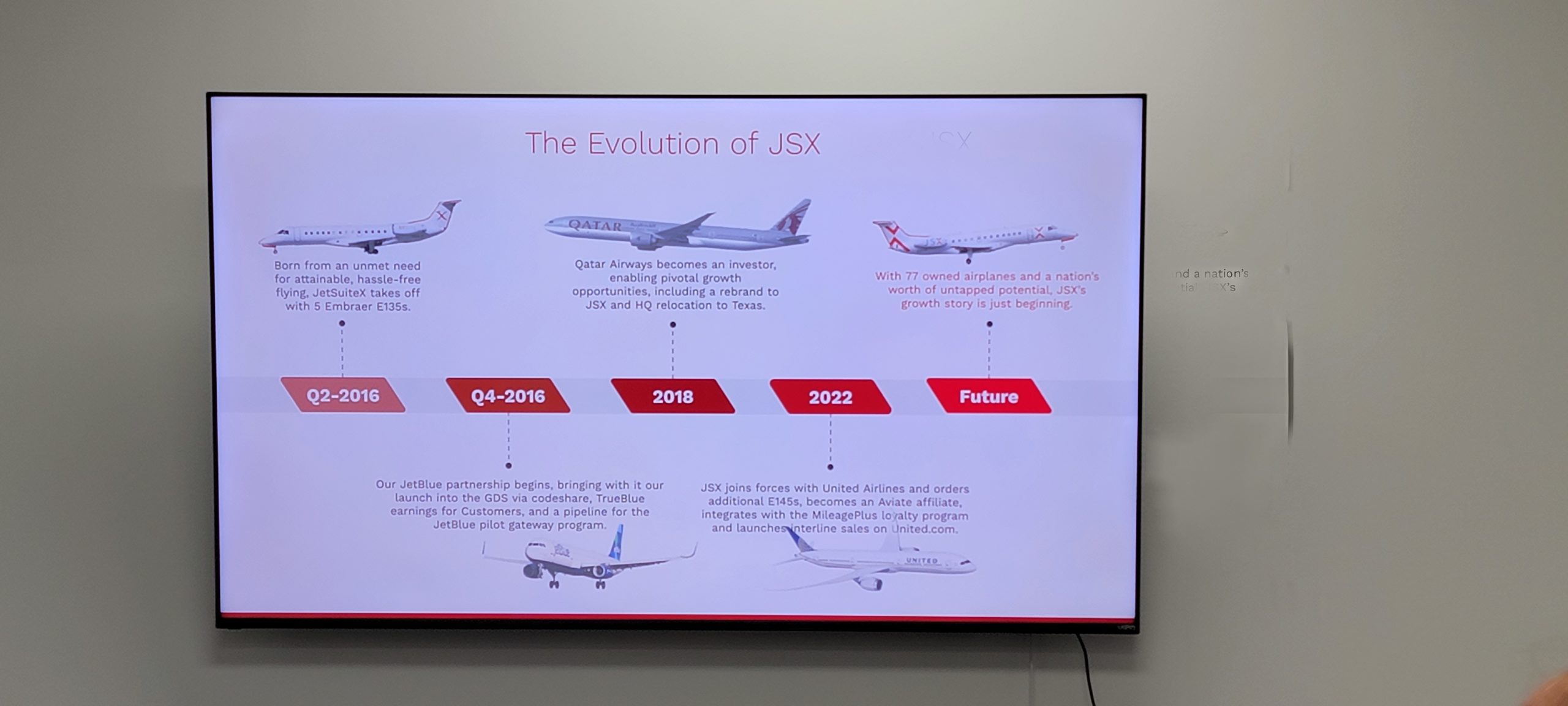
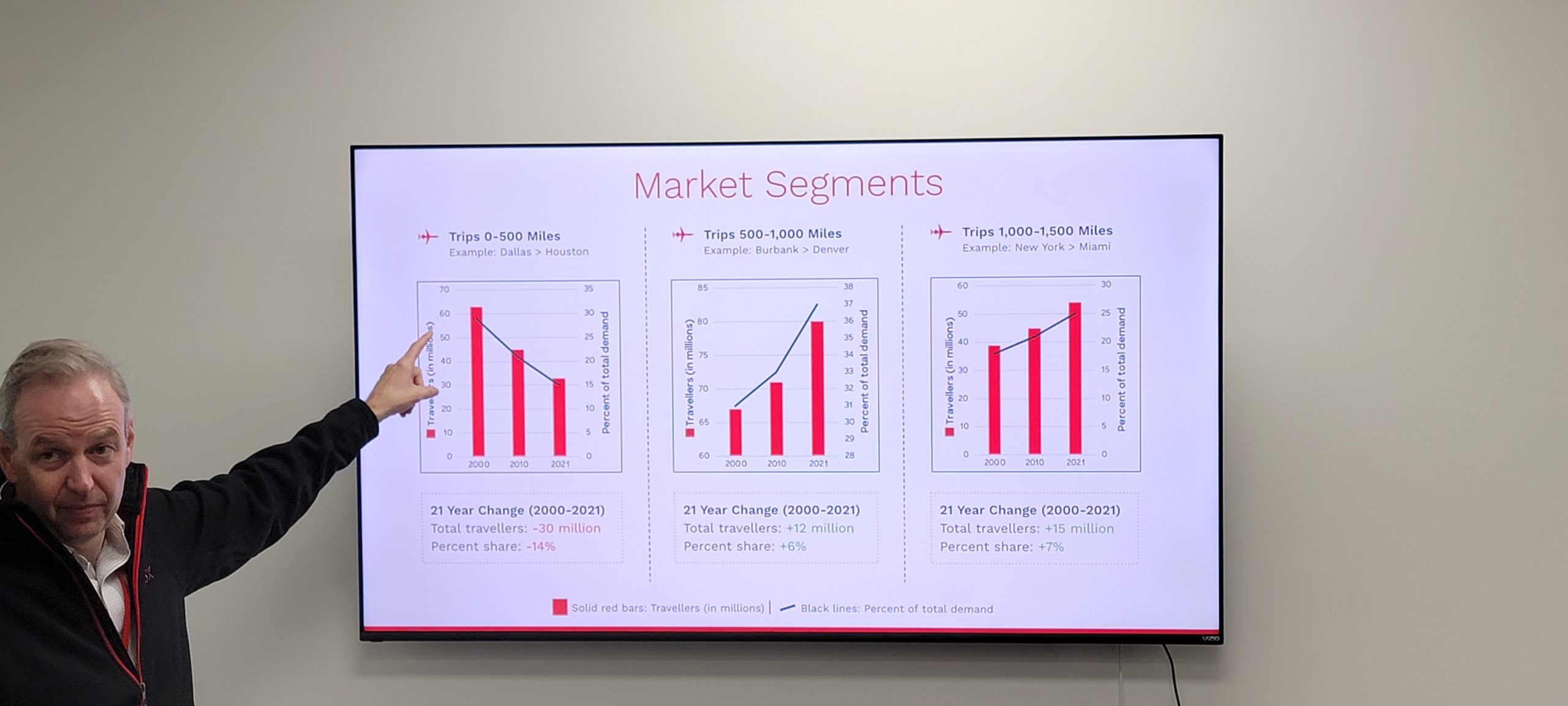
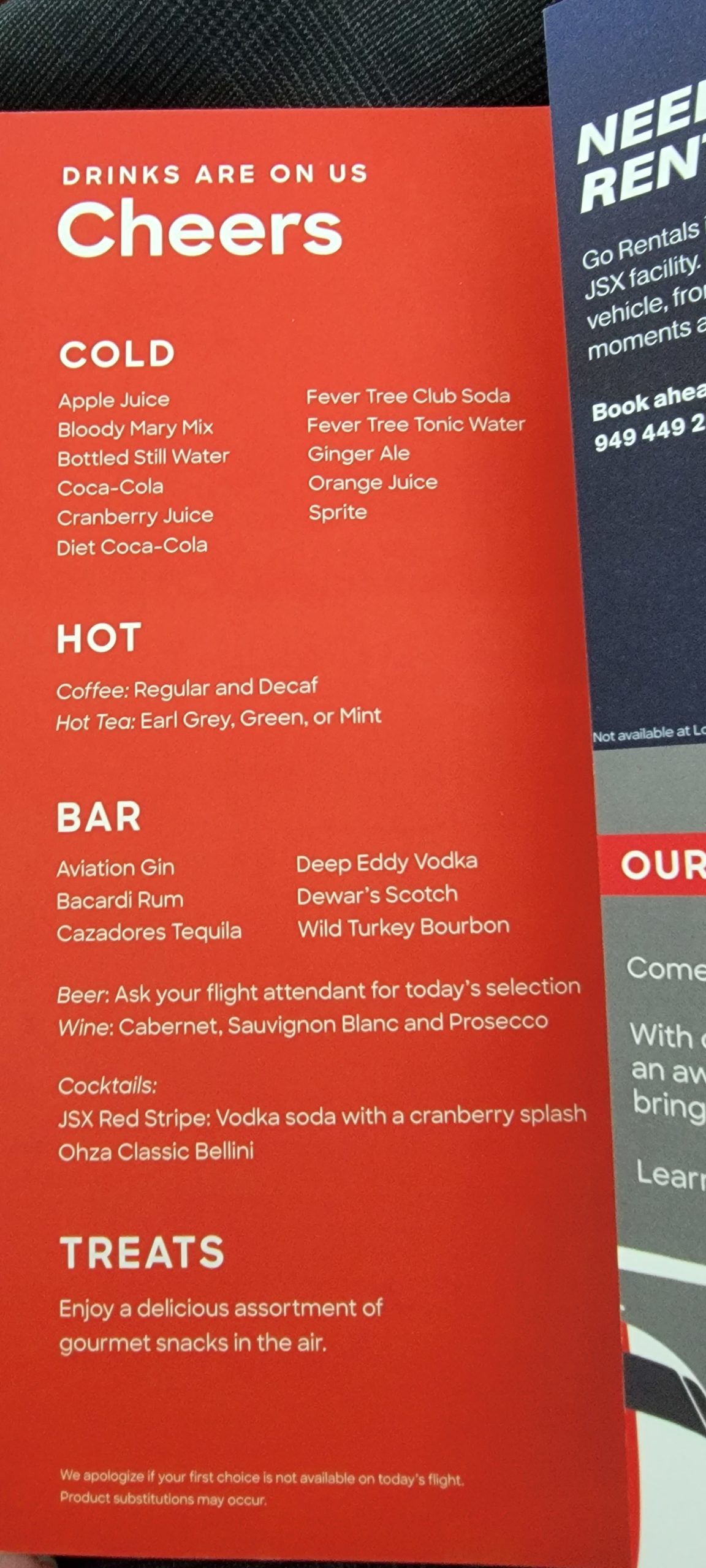
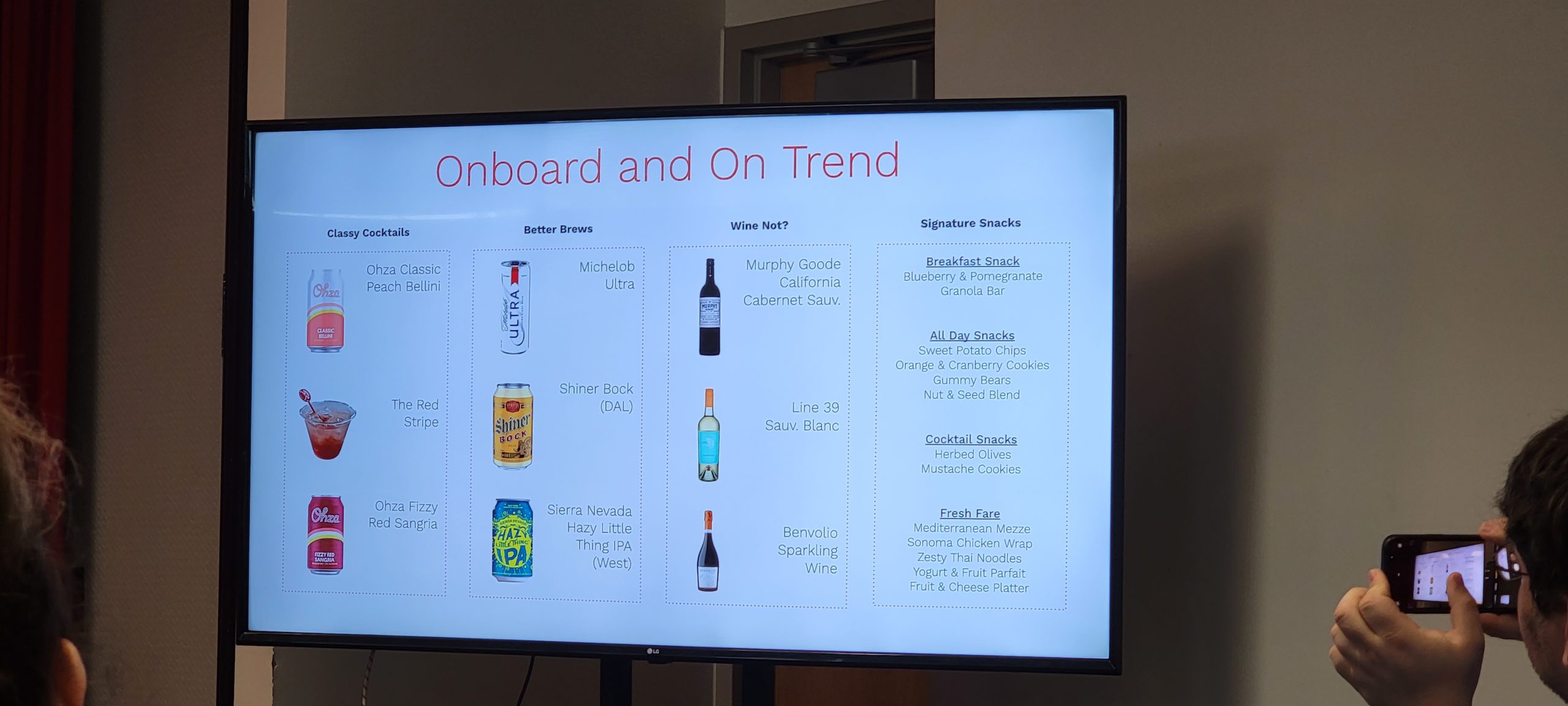
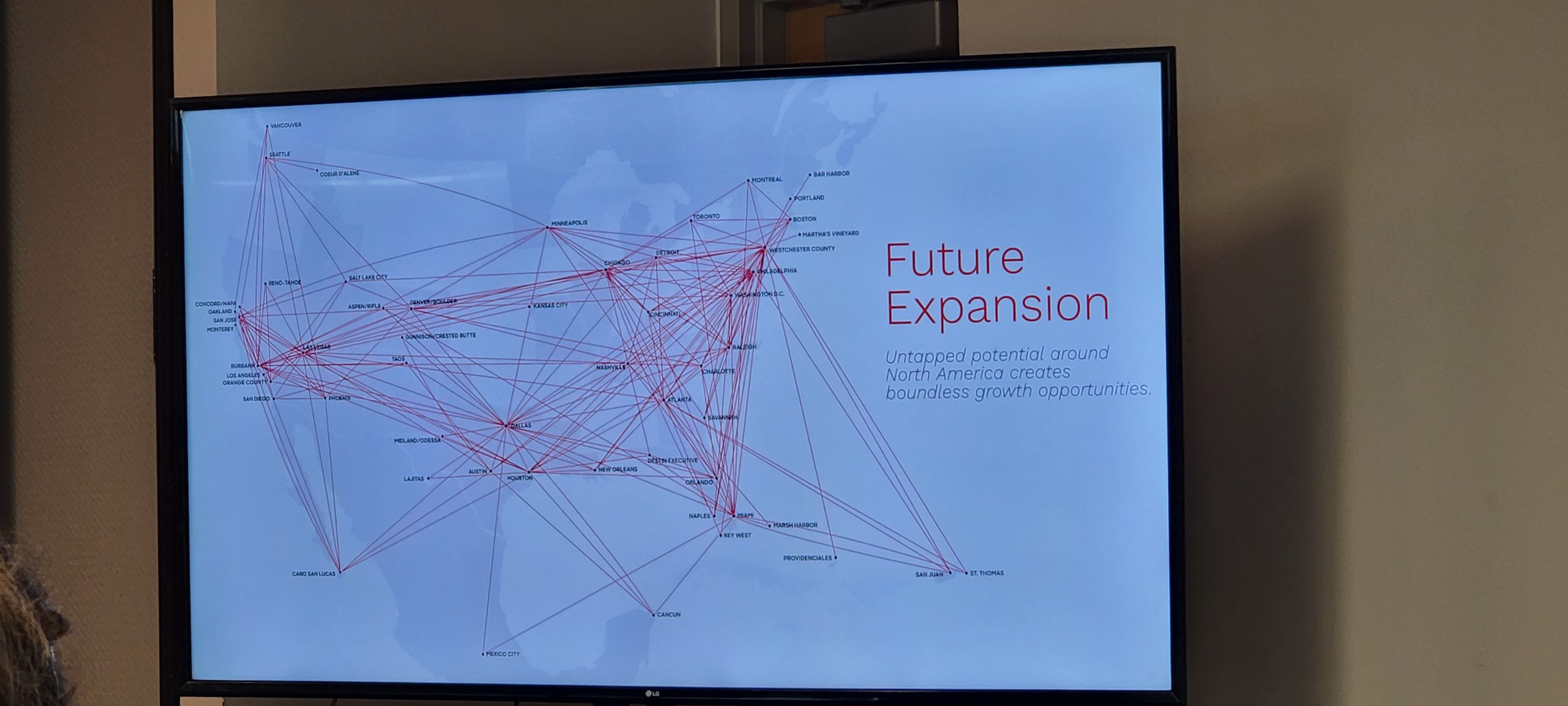

All that glitters isn’t gold. Just takes one crazy . I’ll take the tsa check over this more loosened system any day.
Wow, what a deep dive.
Yes, but your headline says “for the price of a regular ticket.” You lied to your readers again, Gary.
Jerks cannot be identified in a day. Way to be inclusive to non-drinker pilots, too.
What’s the point? May as well write “I breathe oxygen. I pee and poo.” These are byproducts of being human.
Regular readers scratch their head at why you haven’t quit that job. This website makes more than enough money.
Gary,
Please go and re-read this article, and edit…lots of grammar/syntax/spelling errors.
$690 for a round trip from Oakland to Burbank. Almost everything I’ve checked is double or triple the price I can get on the large carriers. $738 from Oakland to Phoenix. Seriously.
Every decade or so a group of former airline executives start an airline that is supposed to revolutionize air travel (e.g. People Express, Midway Airlines). The jury is still out on JSX, but the hoopla surrounding it is reminiscent of so many other airlines that disappeared including foreign carriers like WOW. All were advertised as the “new way” to travel.
I’ve been watching JSX for a few years. There are two routes that I might reasonably use. The pricing on these routes is about the same as a domestic first class ticket. It would be helpful if JSX (meaningfully) piggy-backed on another carrier’s loyalty program. But, the biggest issue for me is its flight schedule. On these routes, not seven days a week and the departure time on my return legs are inconvenient. In the end, JSX doesn’t do it for me. For others, sure.
Considering who they cater to, I’m curious how many drink in-flight. I imagine this is mostly lawyers, doctors, consultants and upper-middle management who can’t expense a private jet. Still, I expect a better selection of wine. The people flying this know the difference between $5 wine and $25 wine.
Oh man, do come to MSP please!
JSX – PLEASE evaluate DAL to PSP. This is a busy route with high end leisure pax (surprisingly even in summer) that American completely abuses their pricing power on.
Was there any hint of a timeframe to see a first flight from BOS? I’ve been hoping they’d expand to the northeast. Thanks.
JSX flies So Cal to Vegas at roughly 2-3x the cost of Southwest. But given that Southwest is the only alternative, and they have a spotty record recently, I fly JSX and justify the cost by knowing that my flight won’t be cancelled.
In terms of price, you are way off. Just as an aside, I crunched a bunch of numbers from a flight I would possibly take. IE: New York to Miami.
Over the next 5 months, the average price flying United from EWR to MIA one way fluctuates from 45$ to 150$. With JSX from Westchester you are looking at 650$ to 860$. Even with time saved, it’s just not comparable price-wise. Even with time, how much are you really saving? With TSA Pre and such, I’m at my gate in 30 minutes unless I check bags. Even assuming you still give a much bigger window to account for possible delays/complications – You are sitting in a lounge. Not really that much time wasted.
I think the product has merit, and can work for some people. Just not on price.
@Manger – say you work at a hedge fund and live in Greenwich CT. Factor an hour saved in terms of commute to Newark. And given the vagaries of how long it might take to get to the airport, assume you’re arriving at Newark an hour 20 minutes prior to departure so that’s a second hour saved. And then you’ve got a shorter trip out of the airport on the other side, too.
So you’ve got more than two hours of time saved, and your hourly rate covers that alone. But you’re getting more of a first class rather than coach inflight experience too.
On the other hand say you live on Staten Island! This doesn’t work out for everyone but you’re comparing one of JSX’s longest routes, where there’s a lot of competition, so not completely typical.
Sorry they are using the Chamber of Horrors. Otherwise sounds great, though more expensive than I’ll pay.
How do they intend to fly an ERJ between HPN and SJU (1600 miles) if they struggle to make DAL to SNA (1200 miles) non-stop?
AUS-DAL really doesn’t make sense to me. The flight isn’t long enough to get much value out of a more comfortable aircraft, and any “business traveler” should have precheck and clear, so there’s no real need to arrive at AUS more than 20 minutes prior to boarding. I generally leave my house 75 minutes prior to departure, so JSX can’t really save me time. I just don’t get it
@Jerry – the time savings of a private terminal is even greater as a proportion of total trip on a short segment like AUS-DAL, and I’ve paid a ~ $70 premium for JSX over AA/WN on the route
I hate Embraers but to avoid the crap that is now domestic airlines, I’d be in. Even at a premium.
The only hassle would be getting our luggage from the private terminal to the main terminal for our international flight and in reverse.
I’m sure that can be worked out.
Come to mama, please
Not flying out of Atlanta.
Missing a market there.
IMO you would be out of your mind to pay way more to fly to Rifle to visit Aspen vs ASE. Similar with Vail/Beaver Creek and EGE
JSX is simply an awesome experience. Most of the haters here have never flown JSX and have zero basis for their opinions.
Personally I wish JSX would make better use of secondary airports like CCR & BJC rather than PHX, LAX and MCO. The whole reason people fly JSX is to avoid the time sink and hassle of the large airport (LAS & OAK commuter terminals are notable exceptions). The only downside I’ve encountered was that JSX wanted government issued ID from my 14-year old to checkin.
Also we should applaud innovative competitors who provide service that elevates the passenger experience, rather than bottom feeder ULCCs like Spirit and Frontier which cause legacy carriers to degrade service. If you don’t want to pay for a premium product, you don’t have to fly JSX.
I would love it if this service flew out of Minneapolis. I am retired, so work time is not longer an issue for me. However, I am a mom and on that end time is more precious than ever. Will be looking forward to using this service once hits Minneapolis market.
Have flown them 4 times last season to Taos from Burbank, Overall really good product. Yes could fly to ABQ or SAF and drive for 2-3 hours and save money, but then need to rent a car etc.
If they expand into underserved markets like that they will do well.
We flew round trip Concord (northern CA) to Burbank (soCal) and had a great trip, no surface traffic hassles, no TSA hassles, no big-airport-parking-gouging-fees, and strongly support JSX continuing to expand. The ticket price was great and very worthwhile to avoid all the big-airport and big-airline hassles. We hope JSX can set up routes cross country if needed by linking with other small user-friendly airlines!
I have never flown JSX but I’ve seen them operate from a distance and it is impressive!, please do an insight into the Maintenance of the aircraft because as an Aircraft Maintenance Tech myself, this is an often overlooked aspect of flying and i guarantee you, it is one you want to know about. You want your pilot to be sound, so why not the person who fixes the plane flying both you and the pilot?